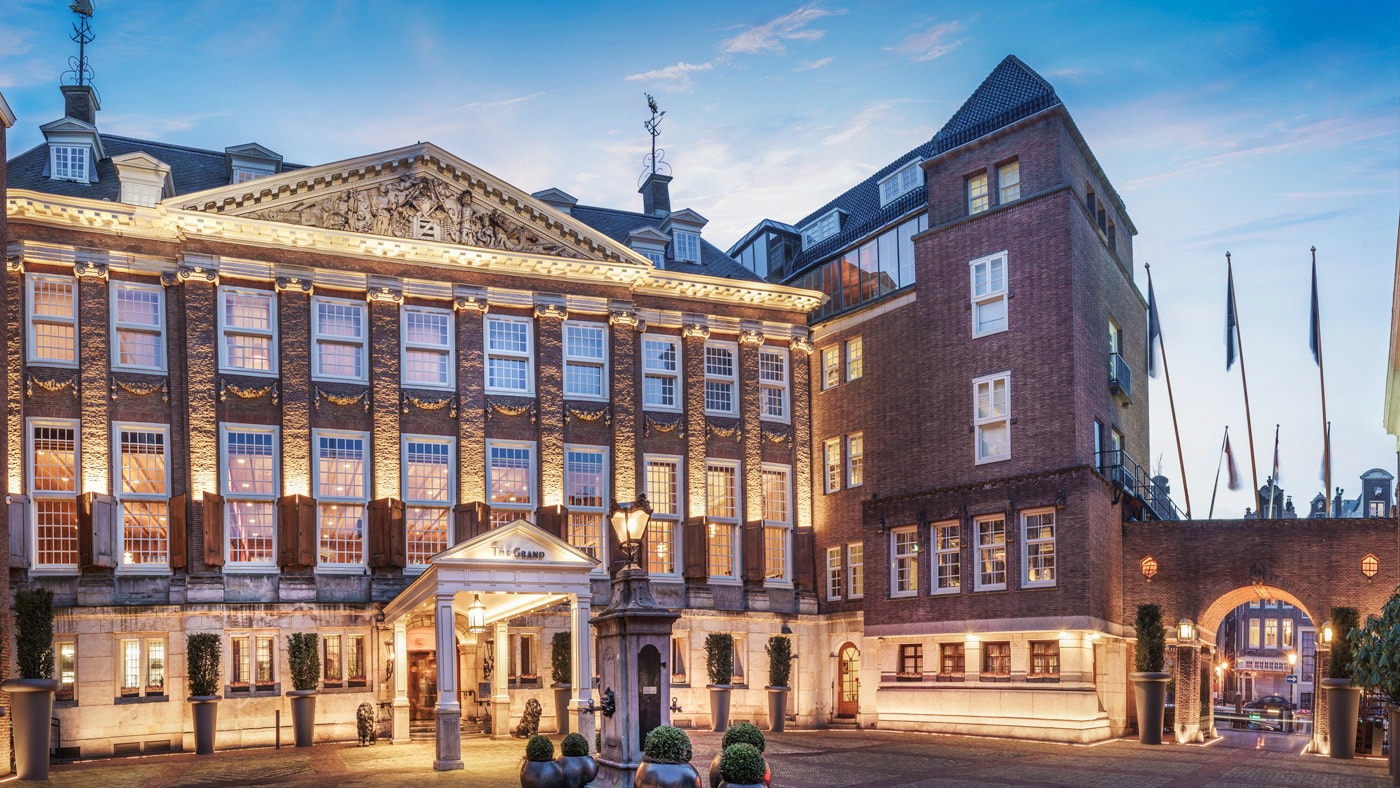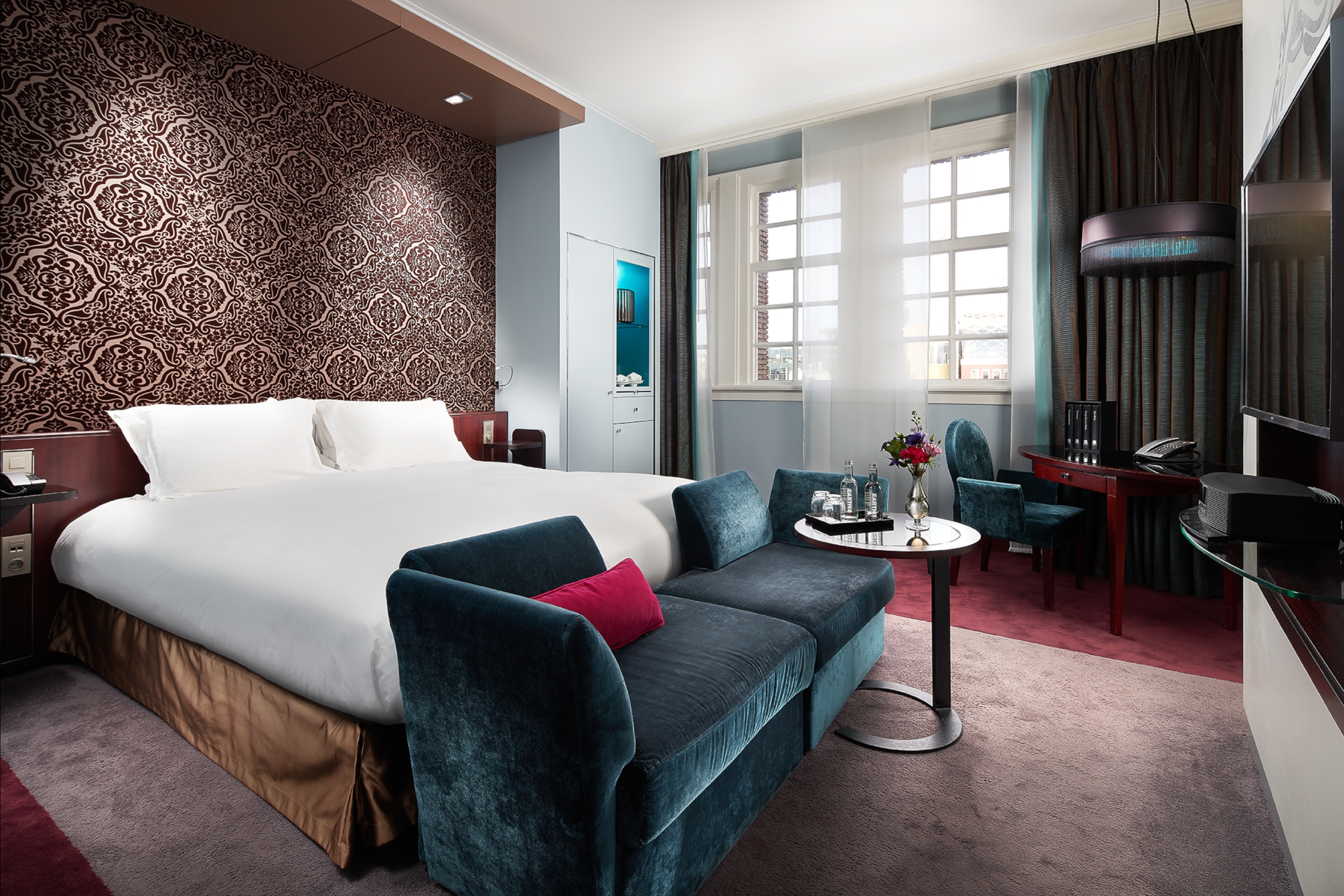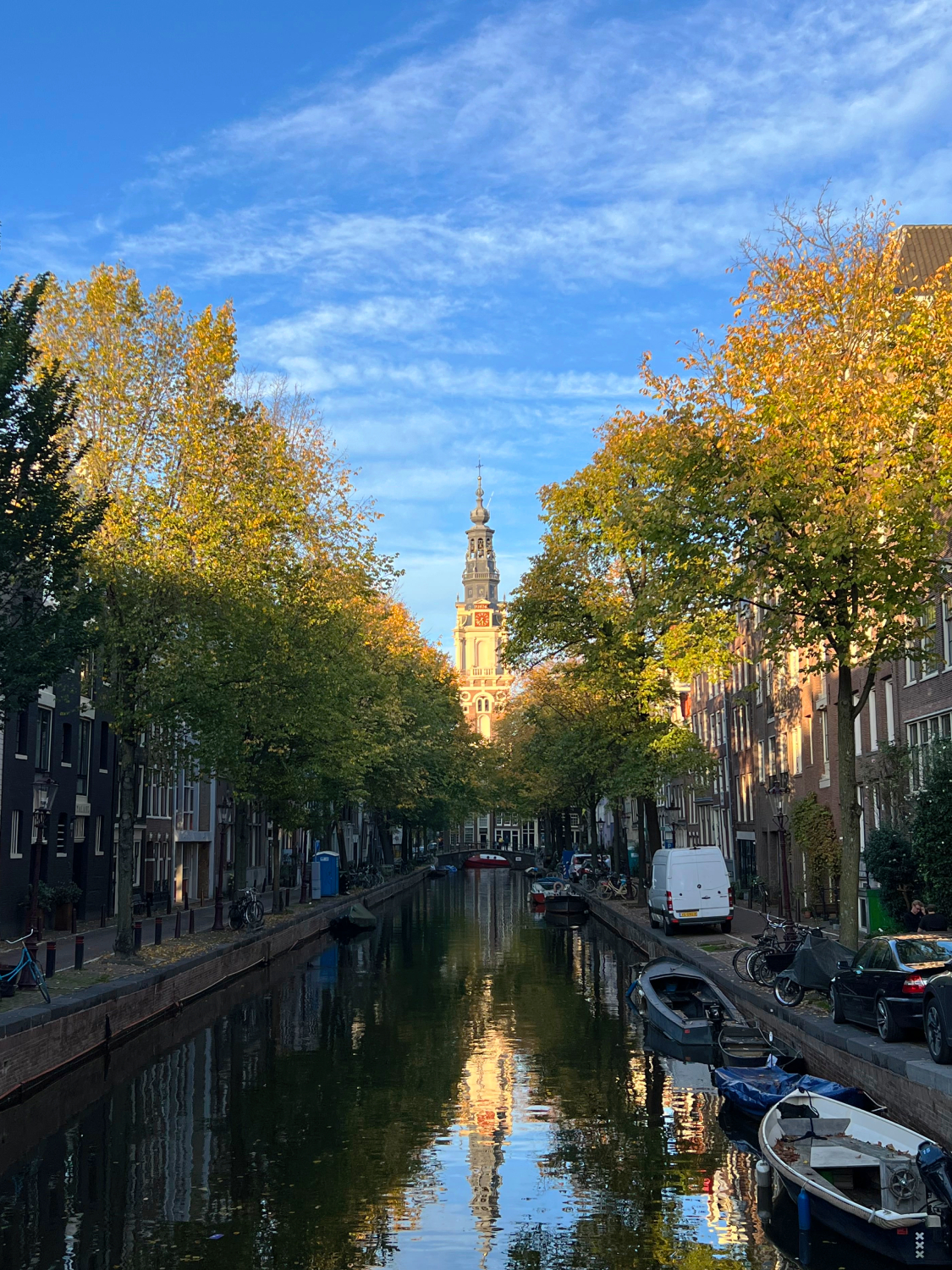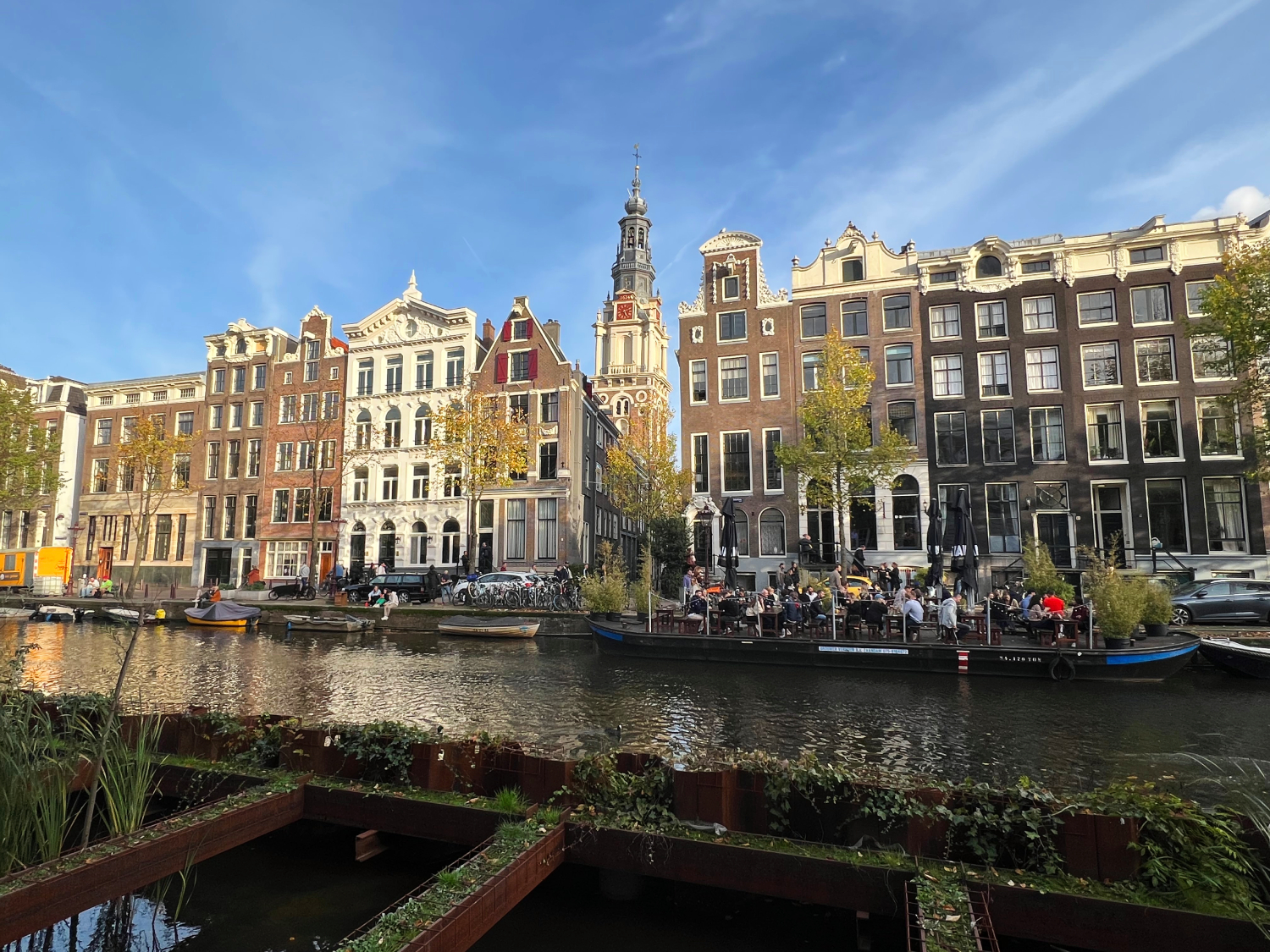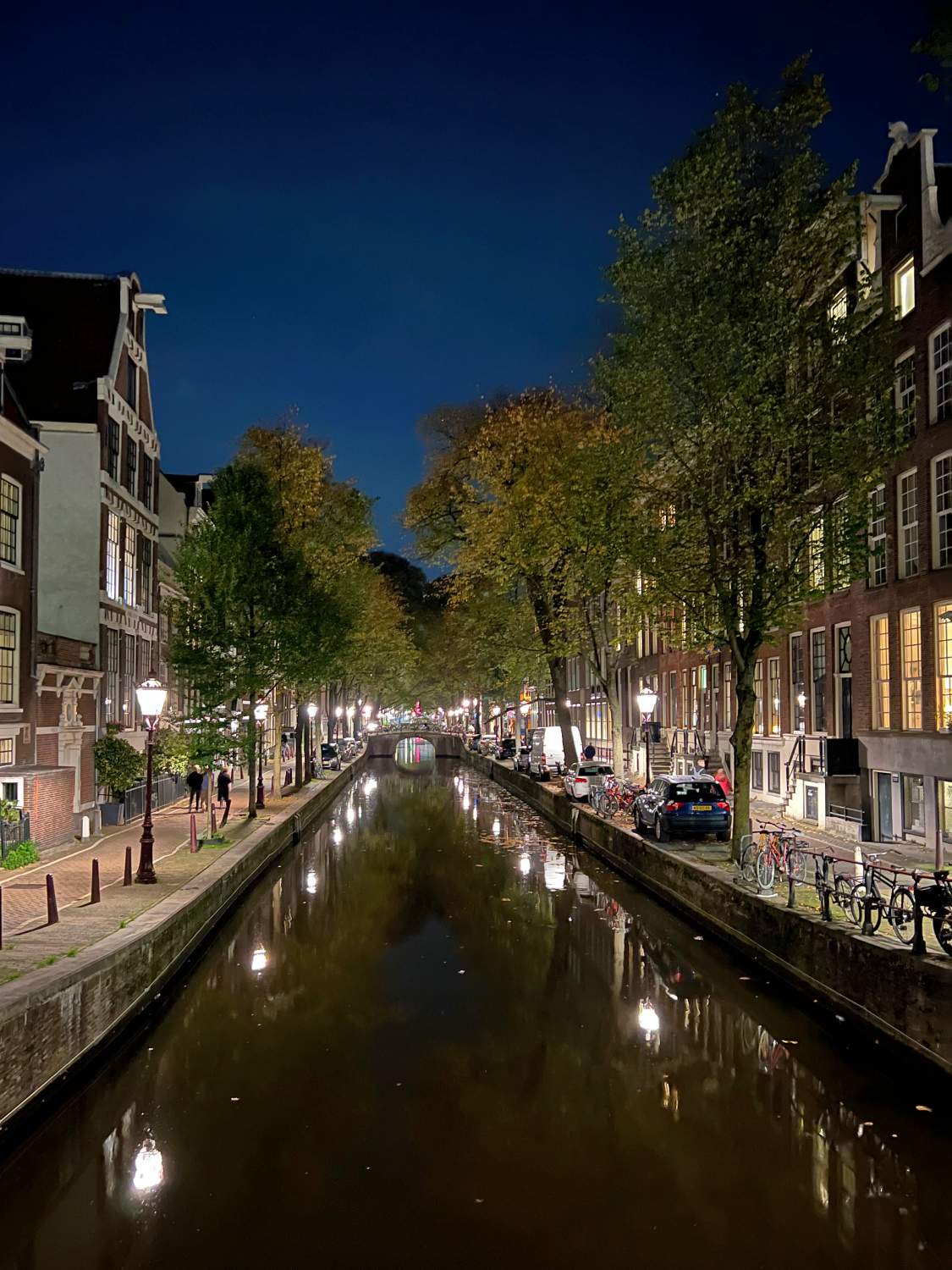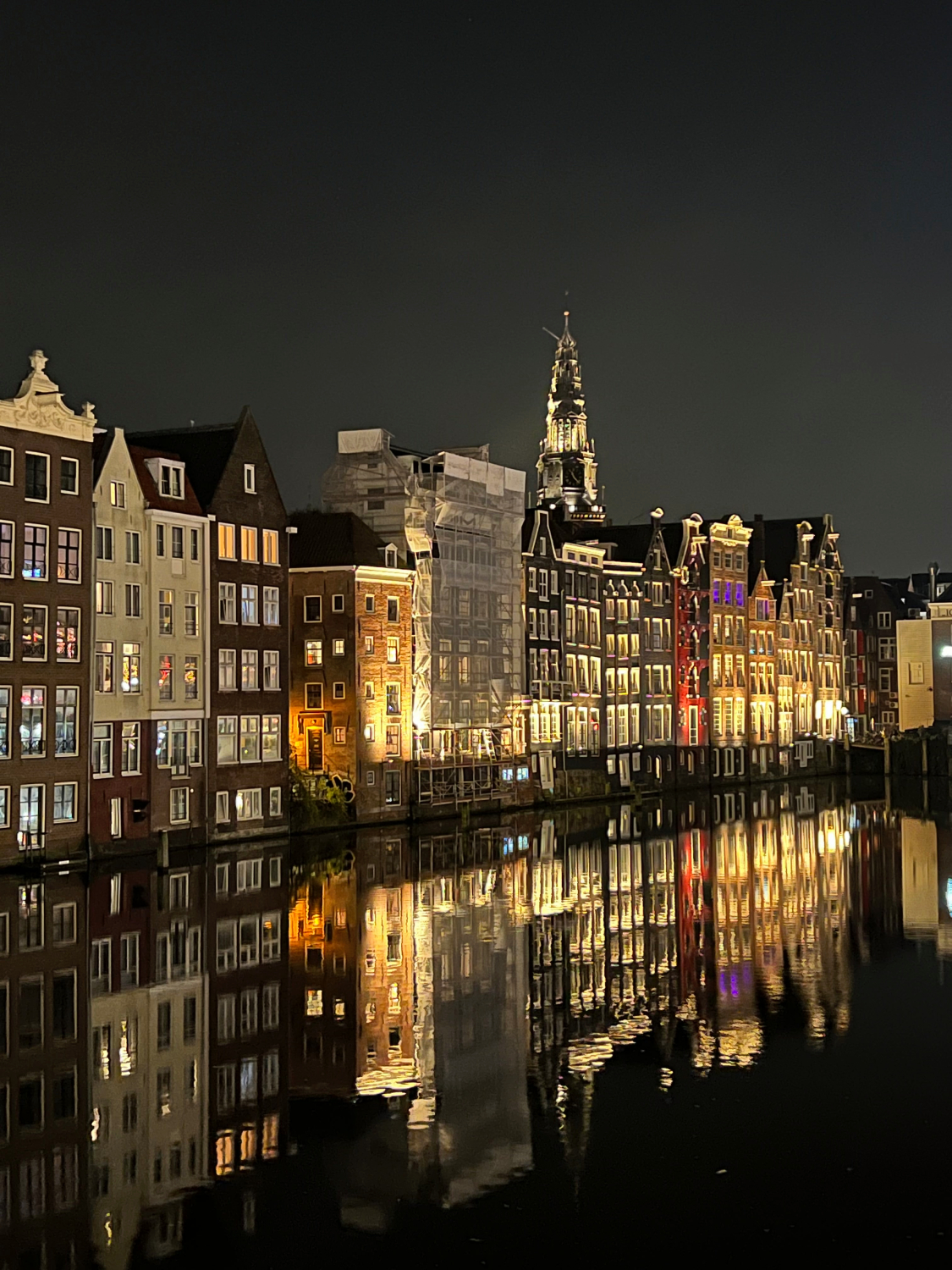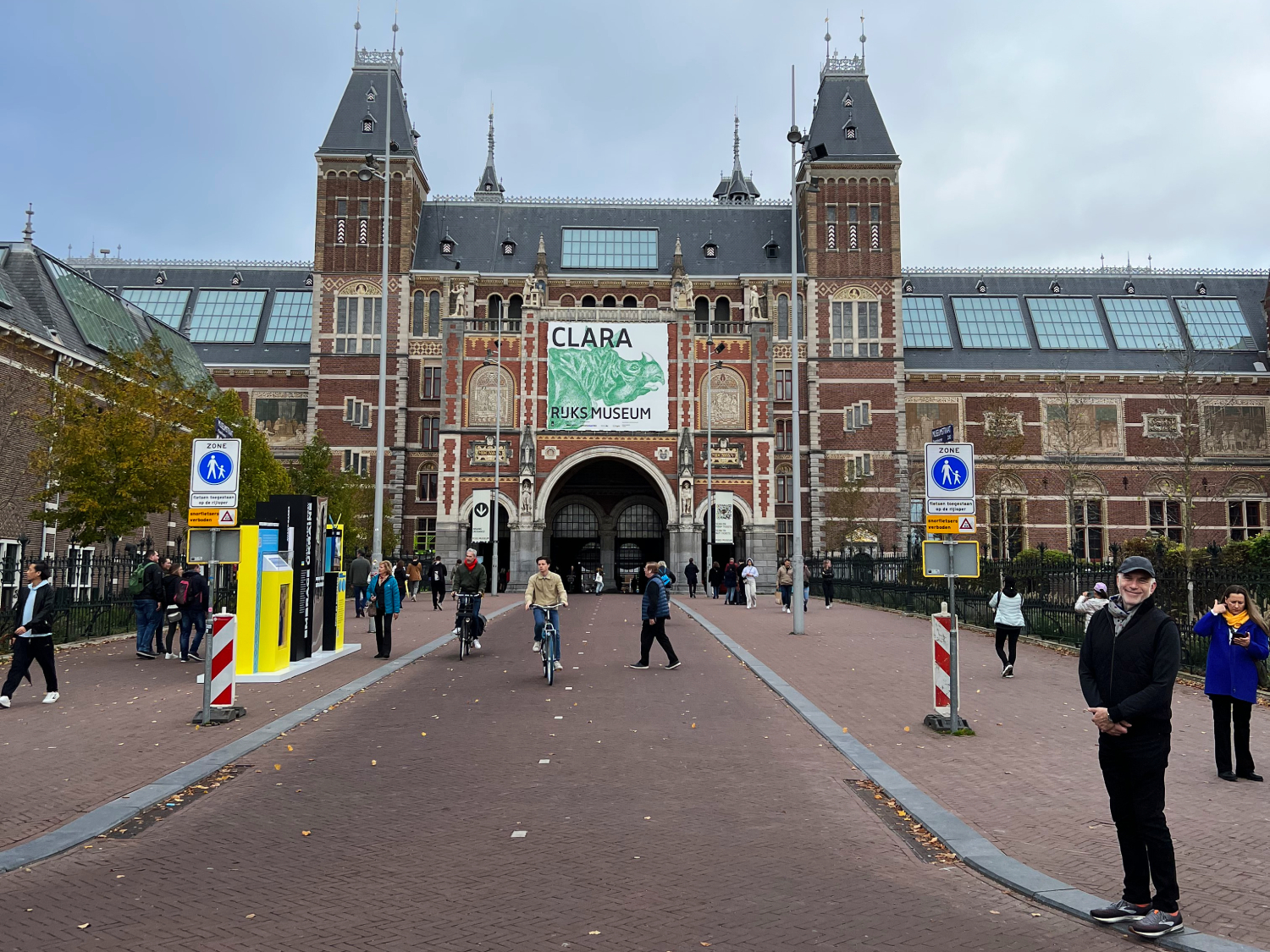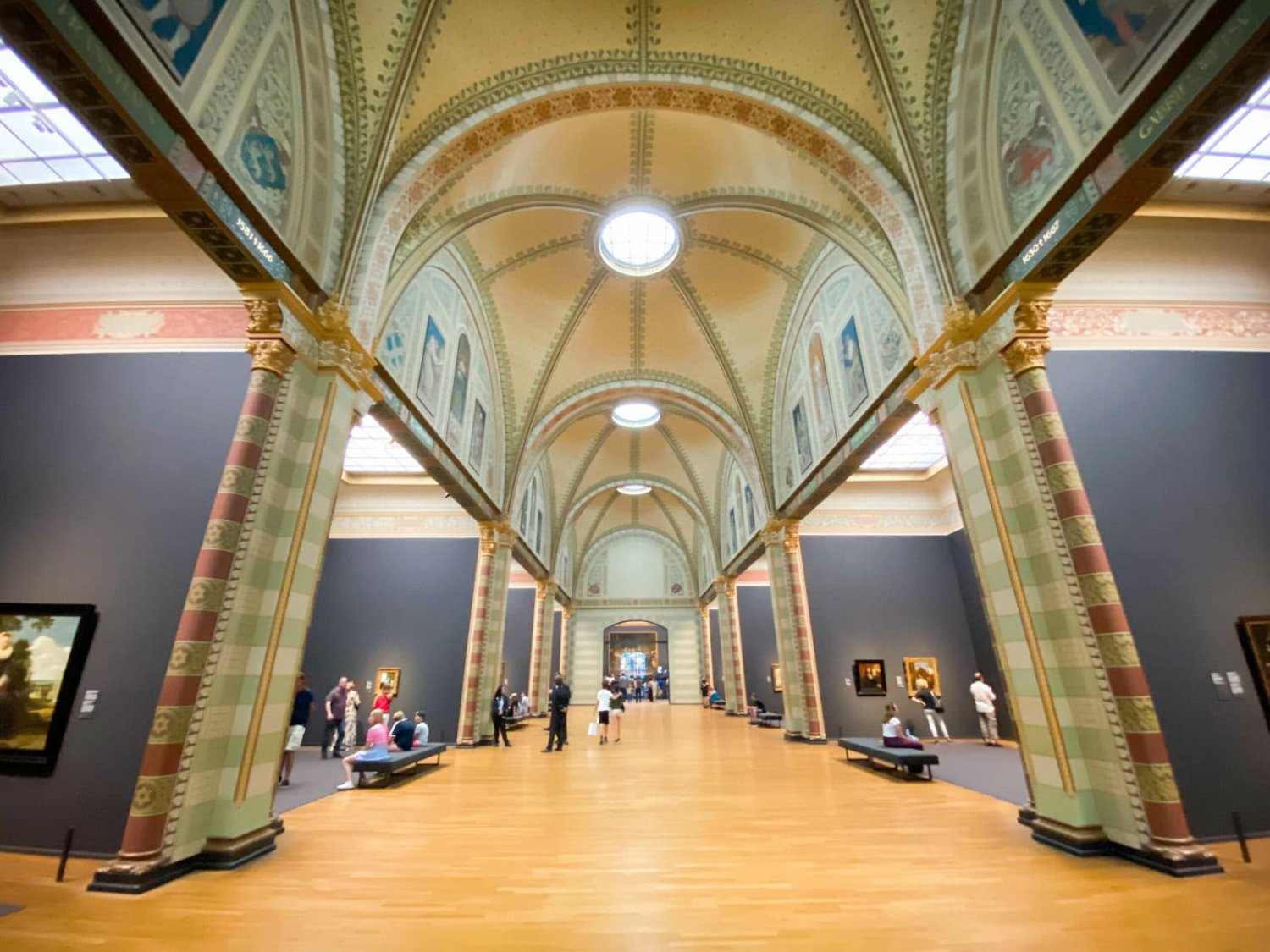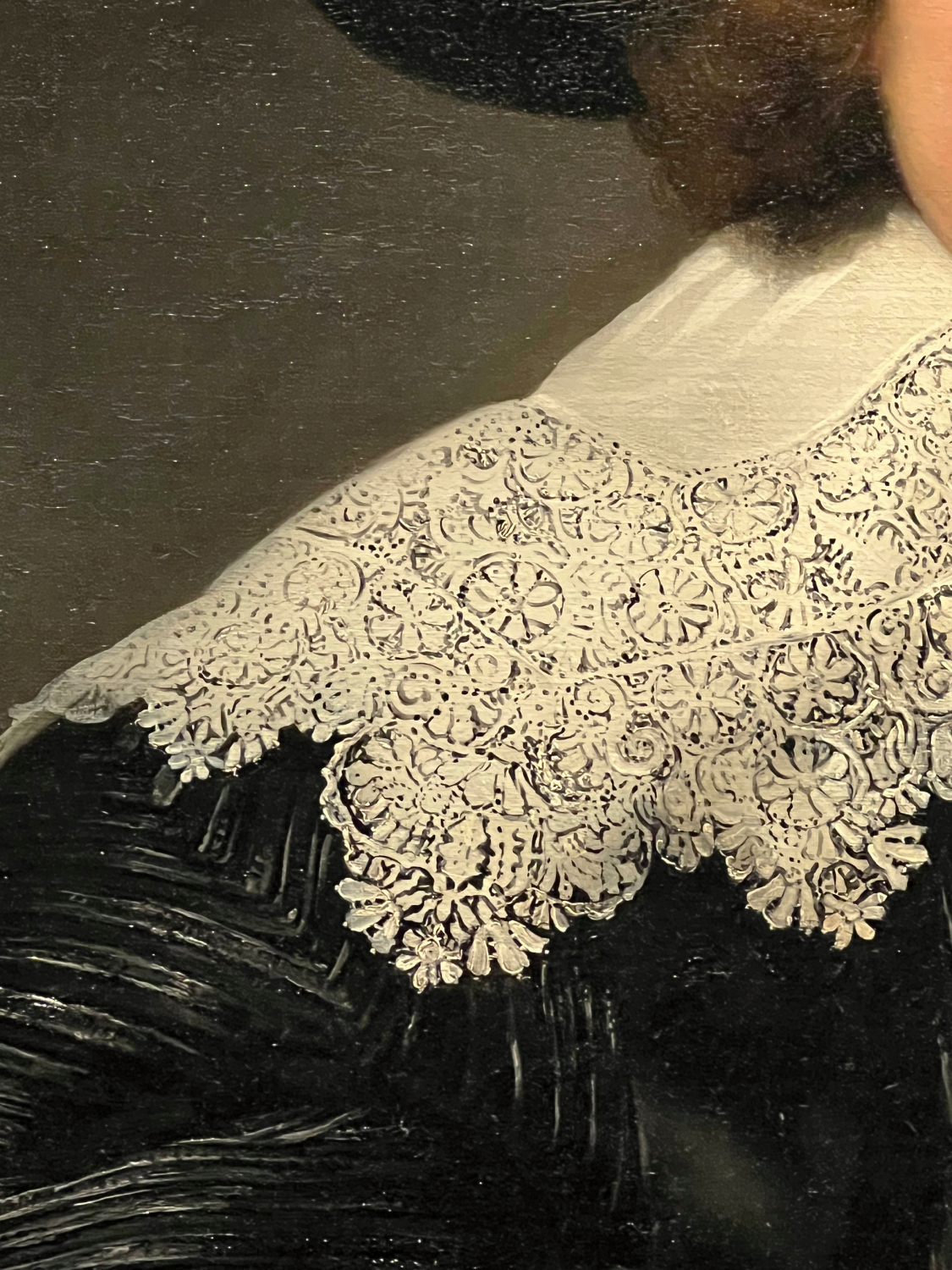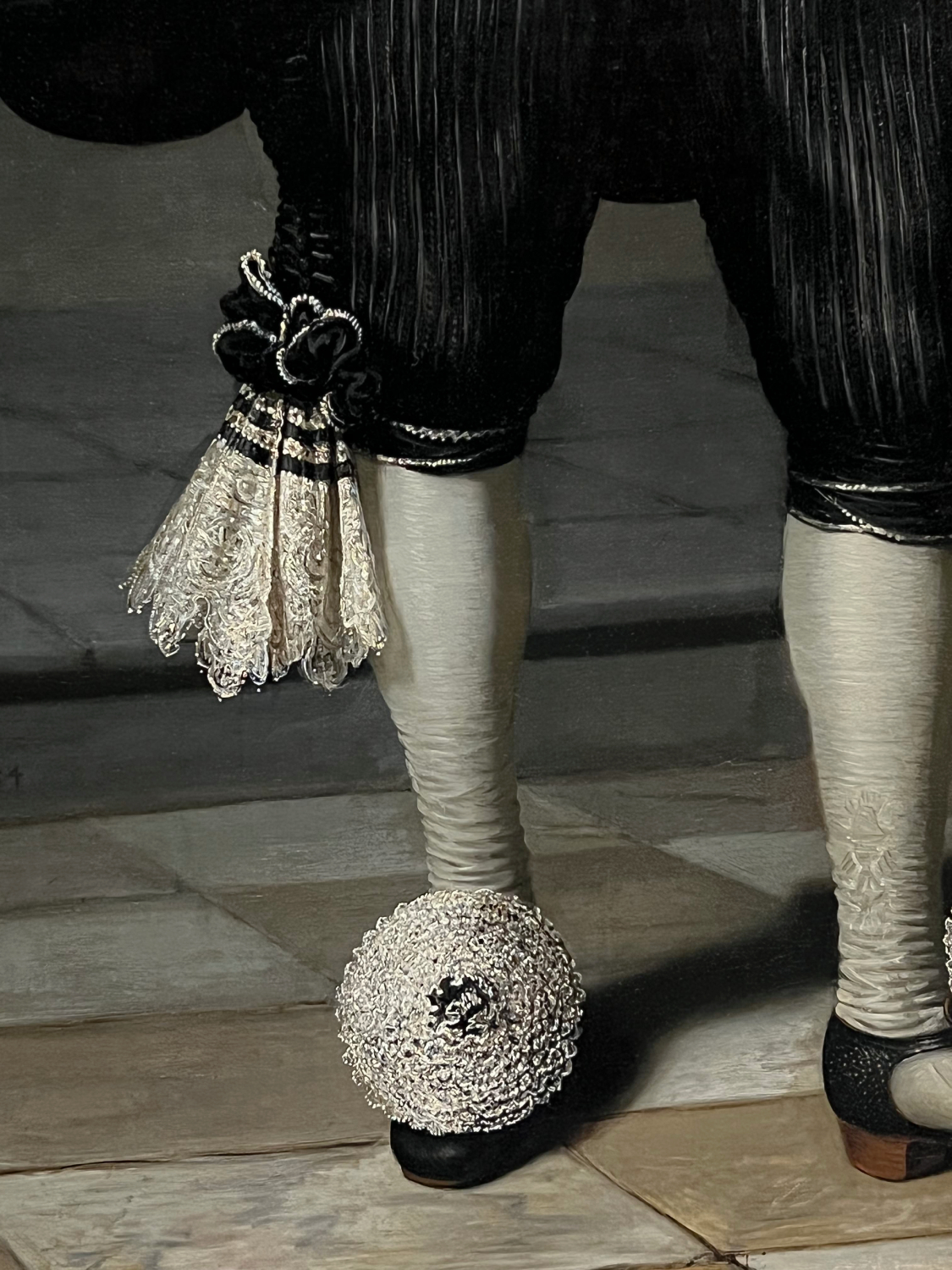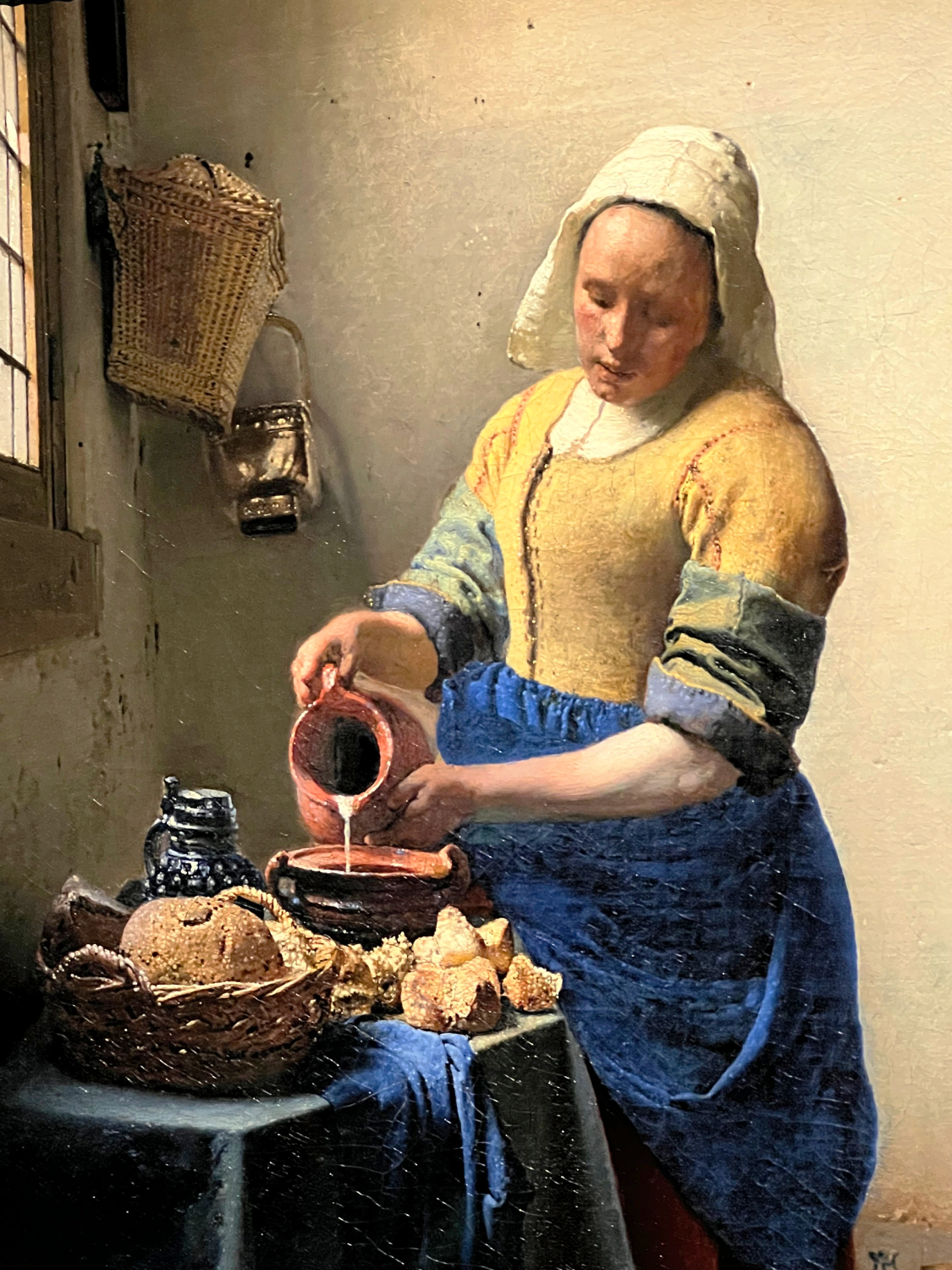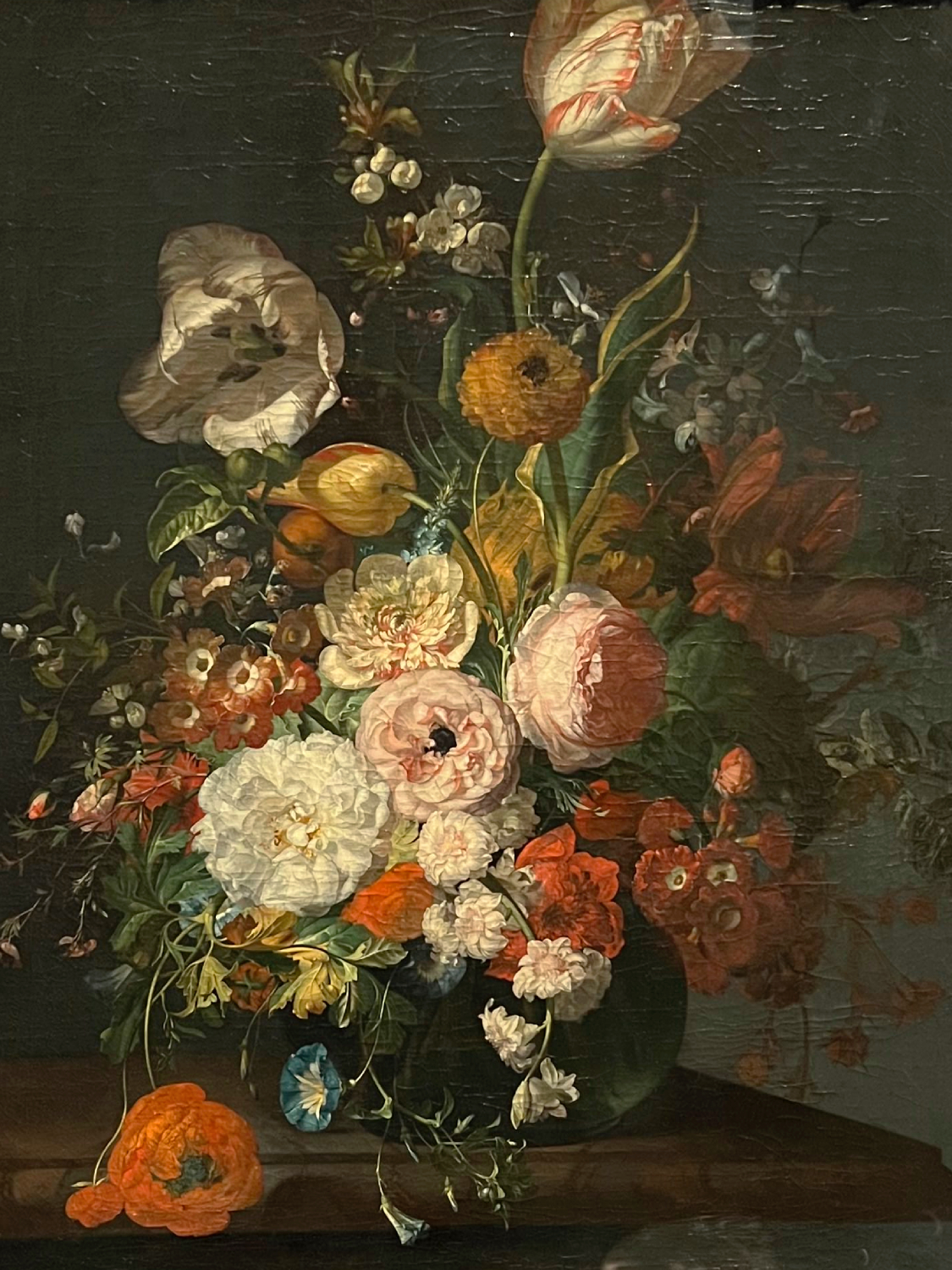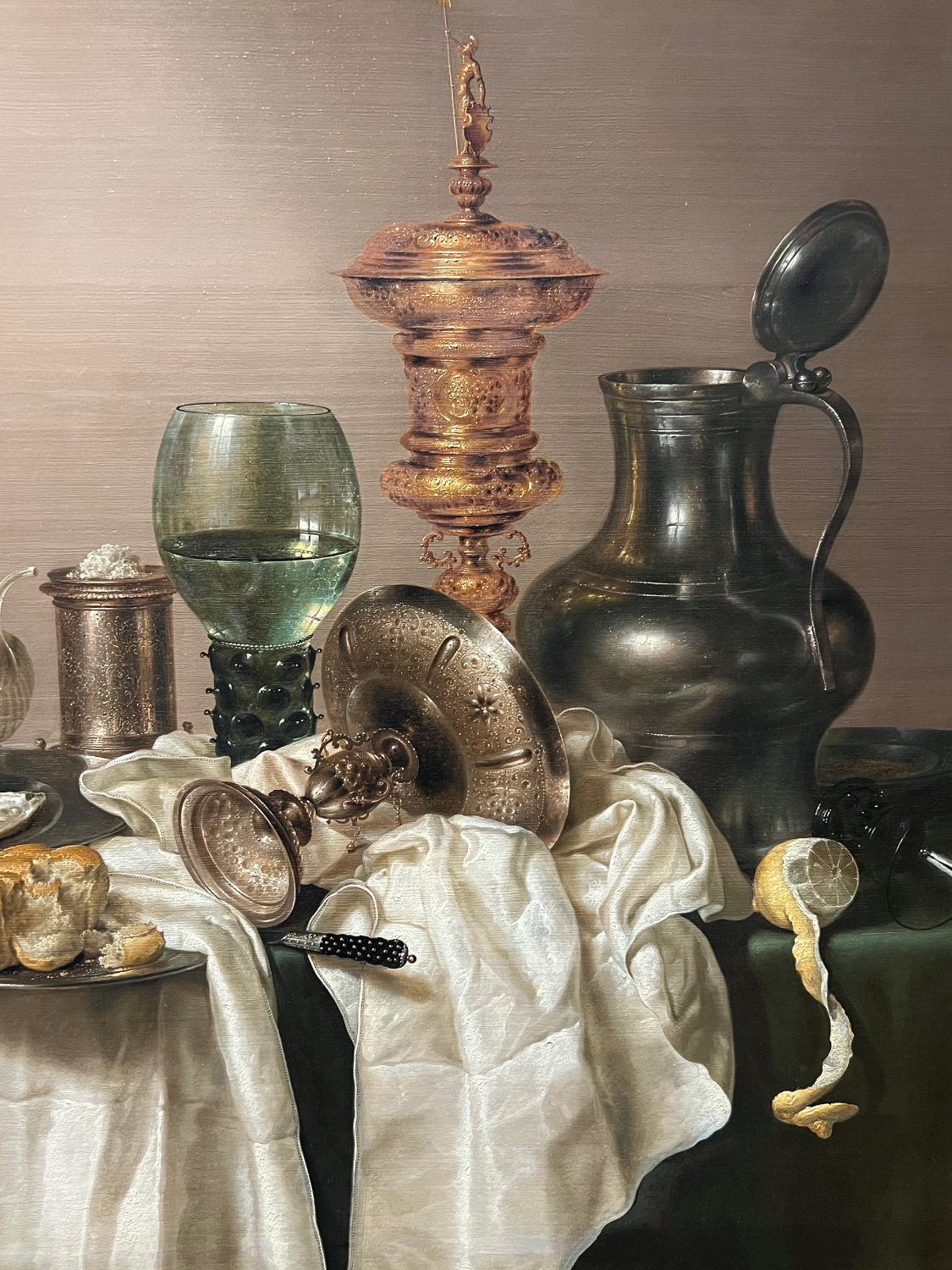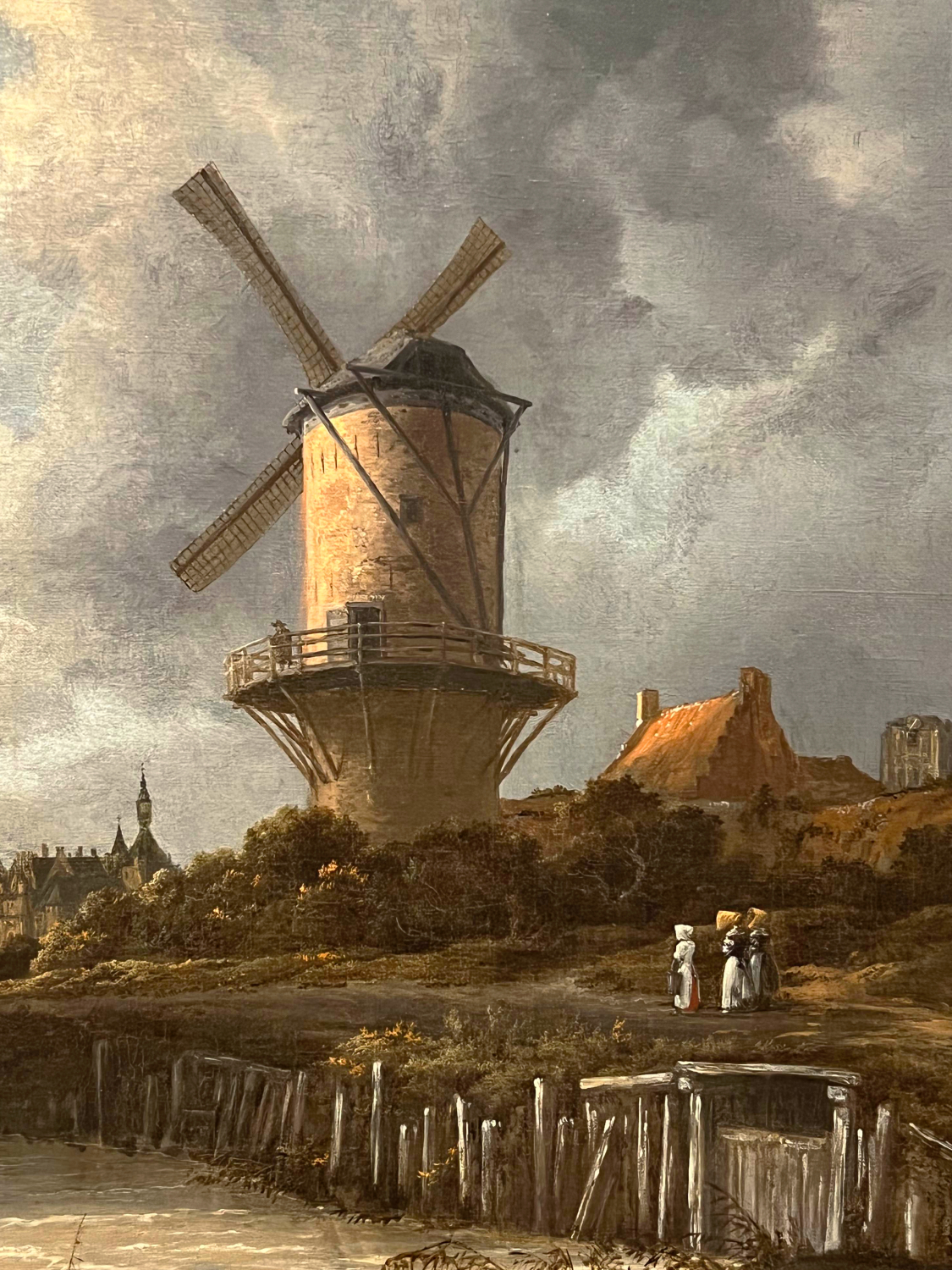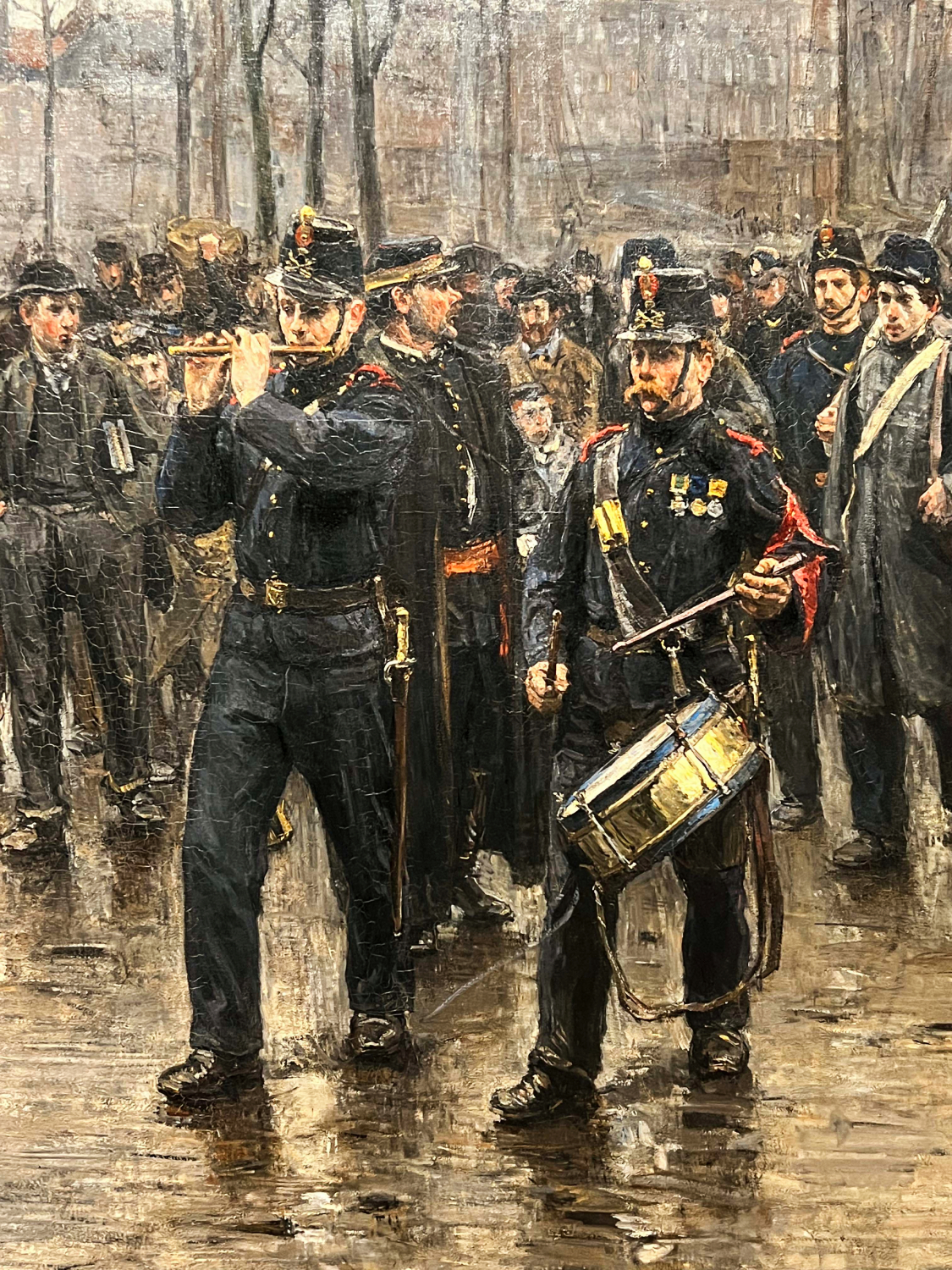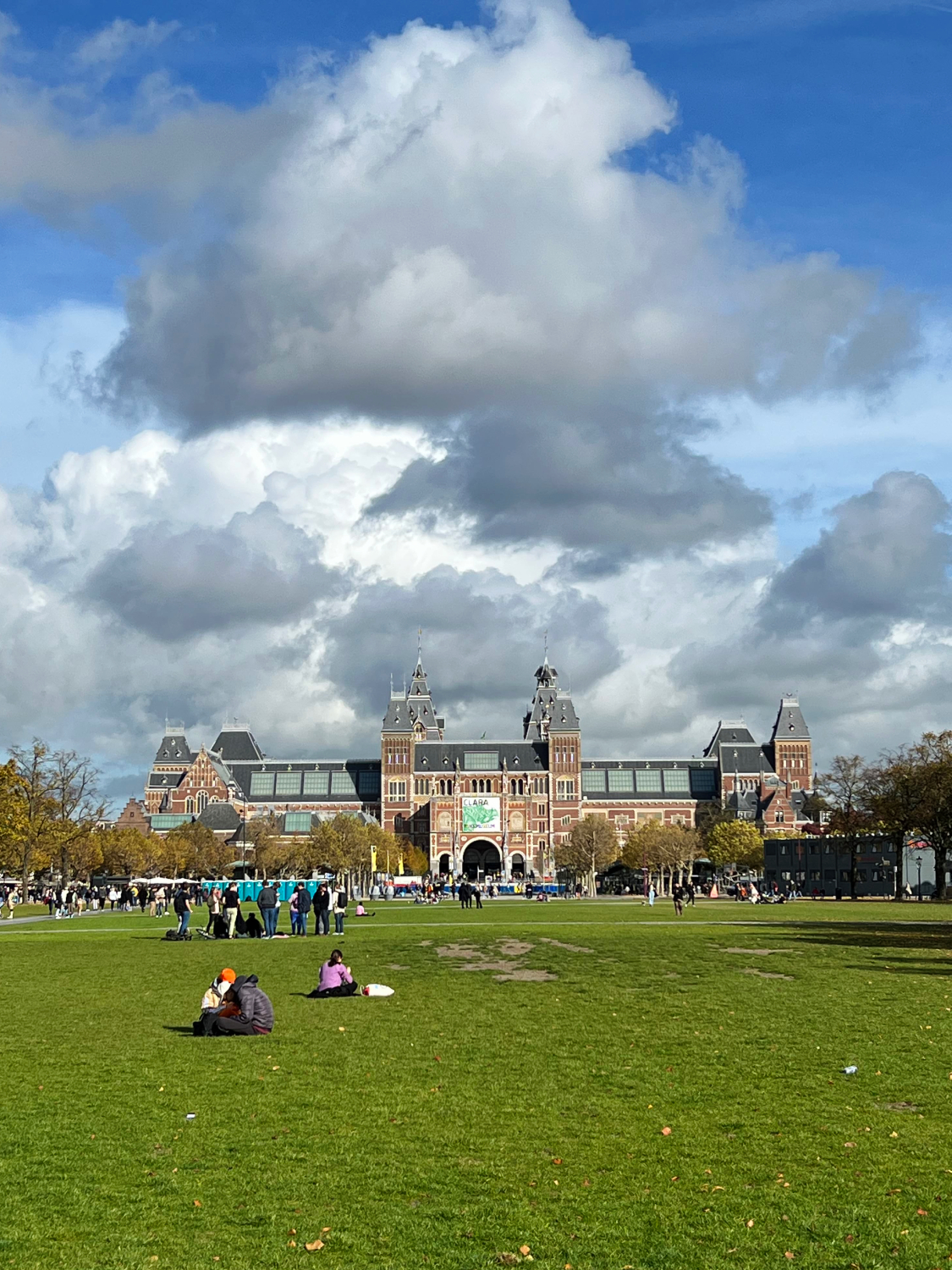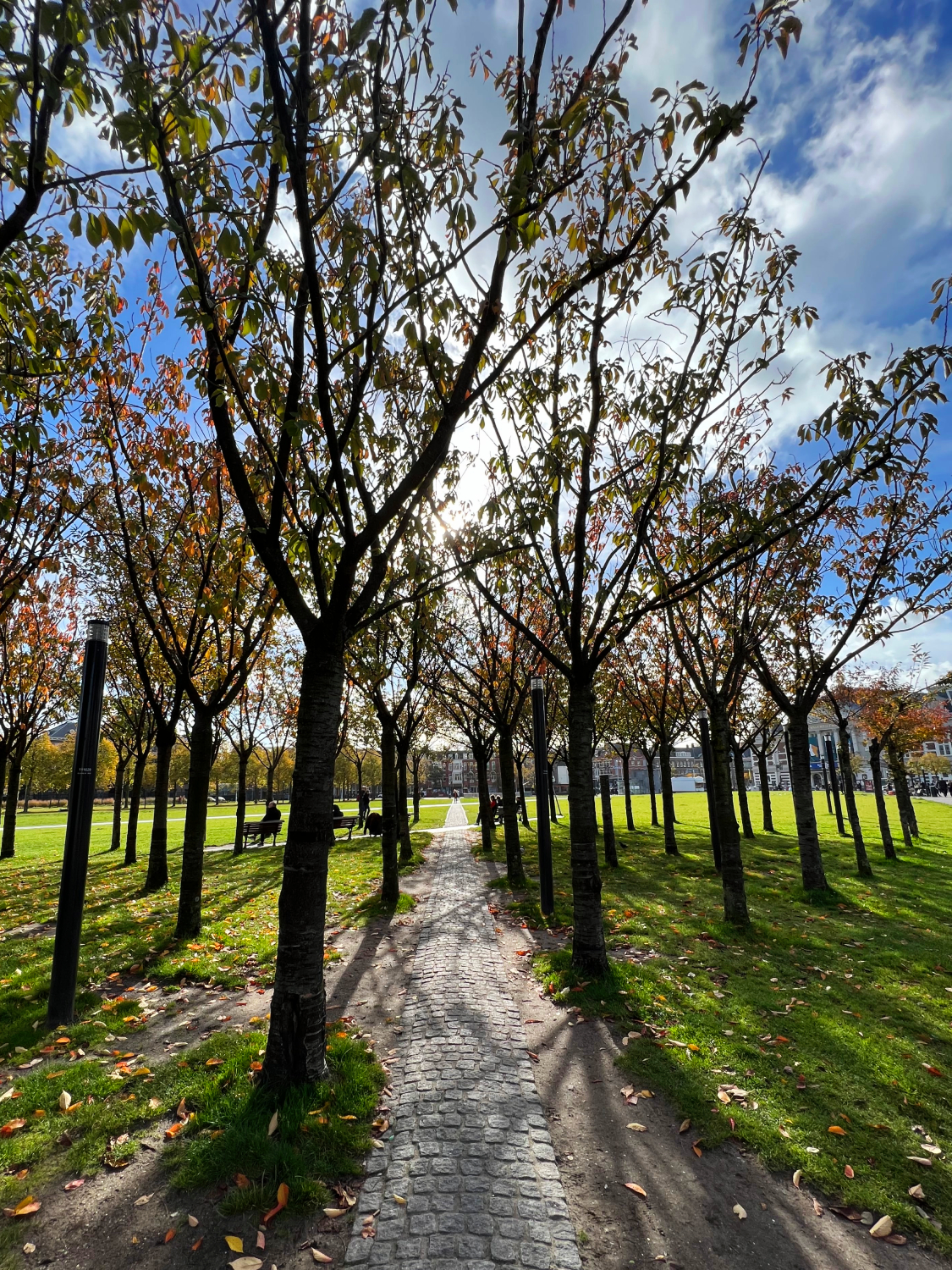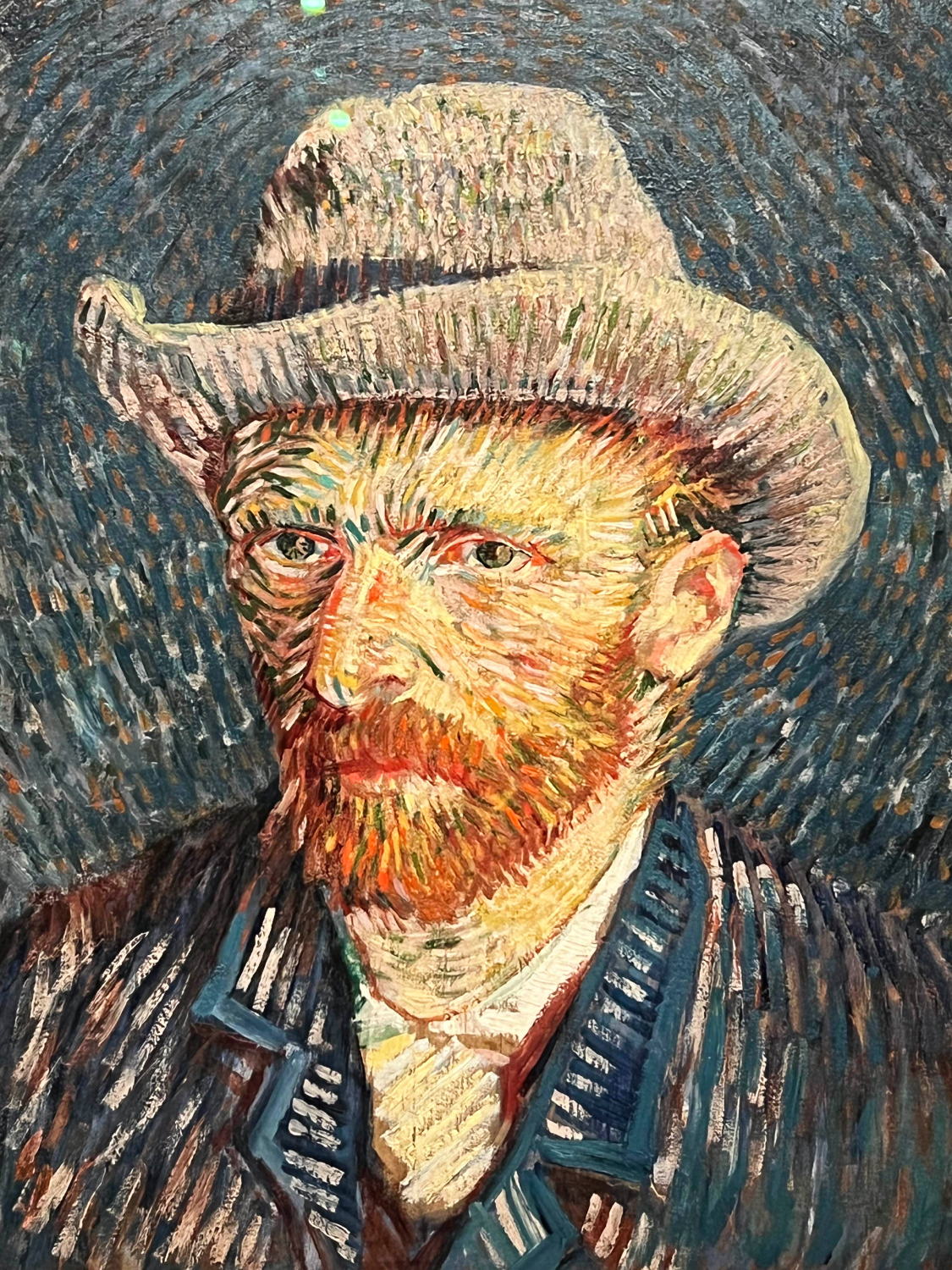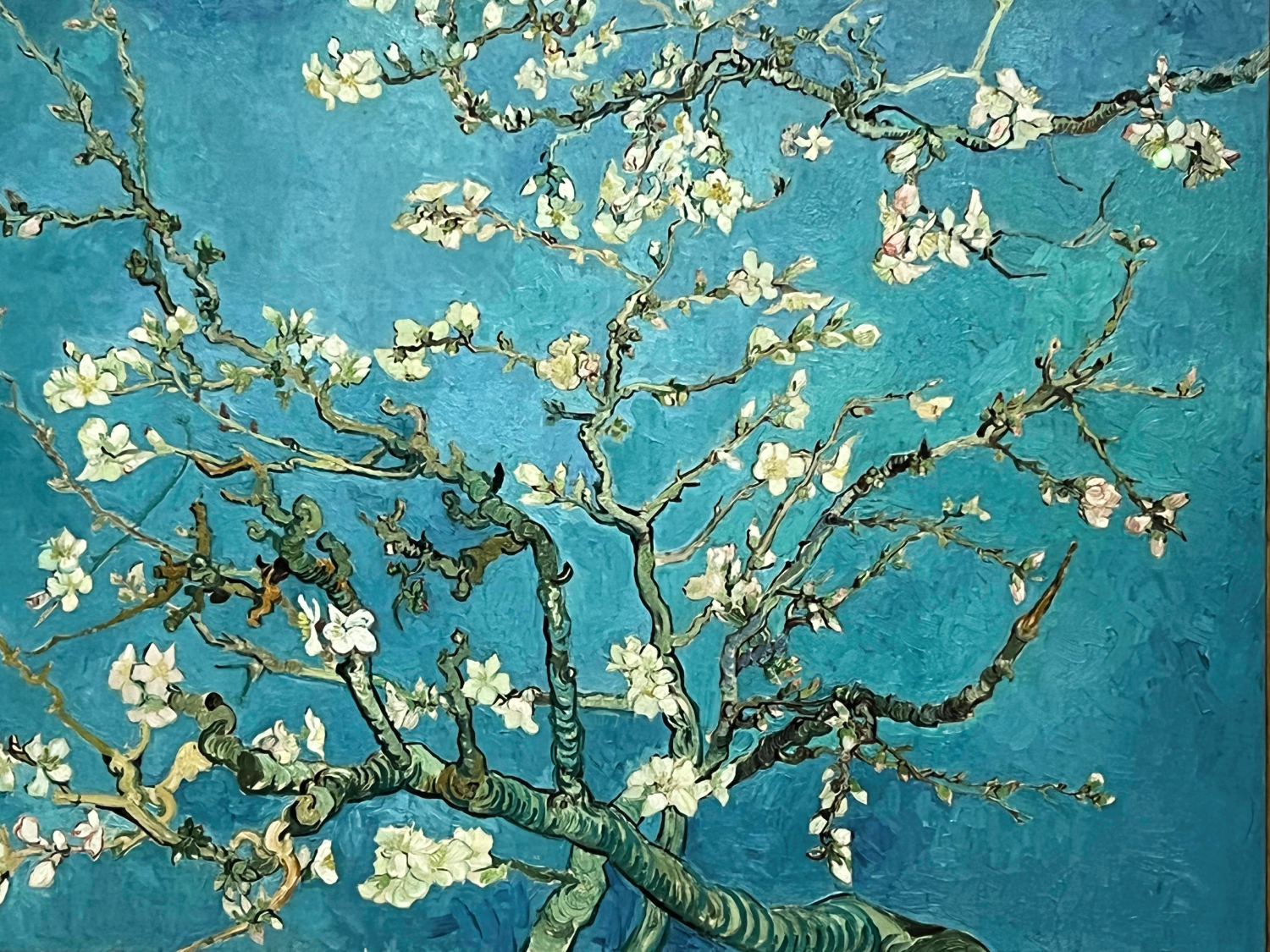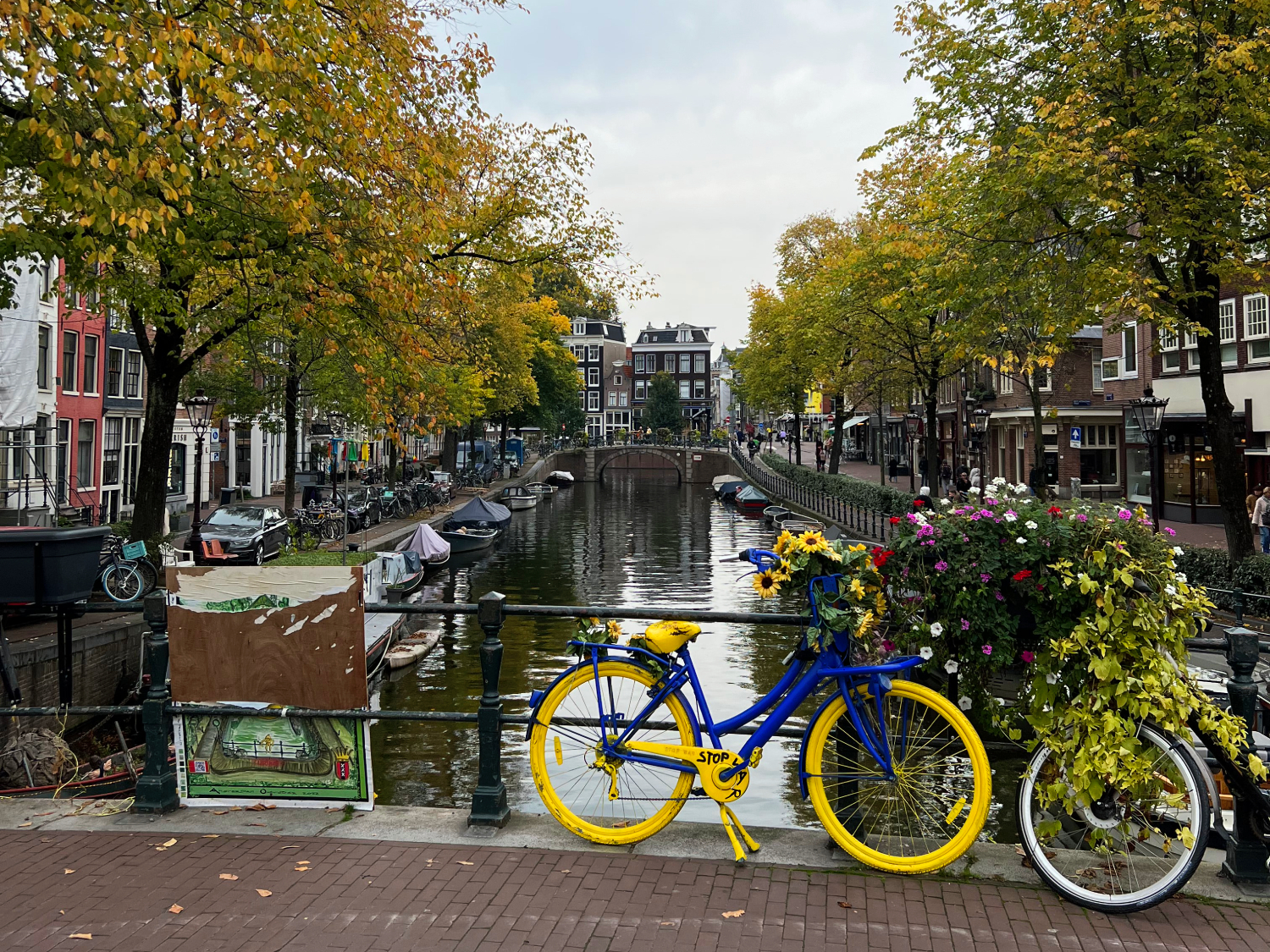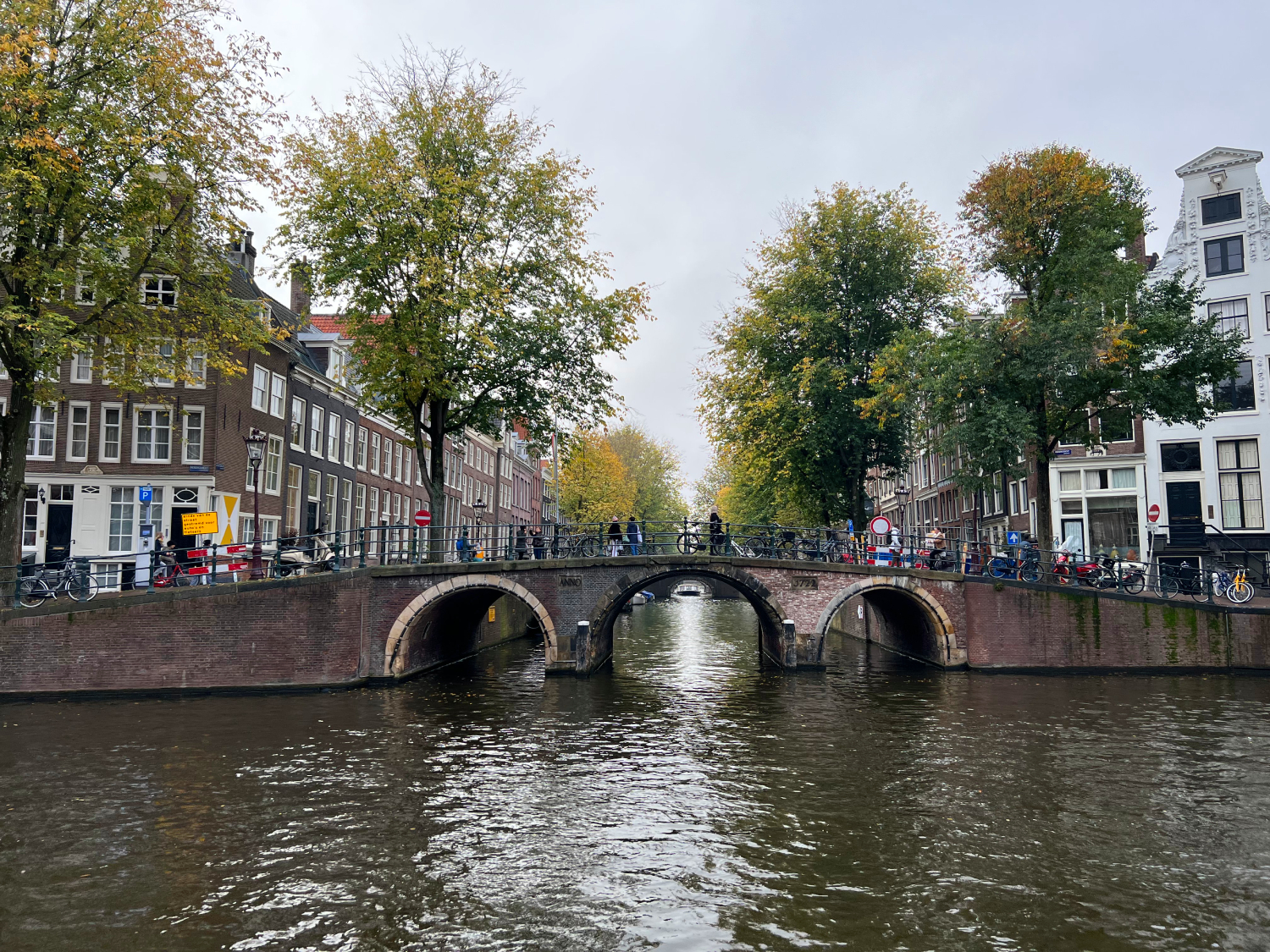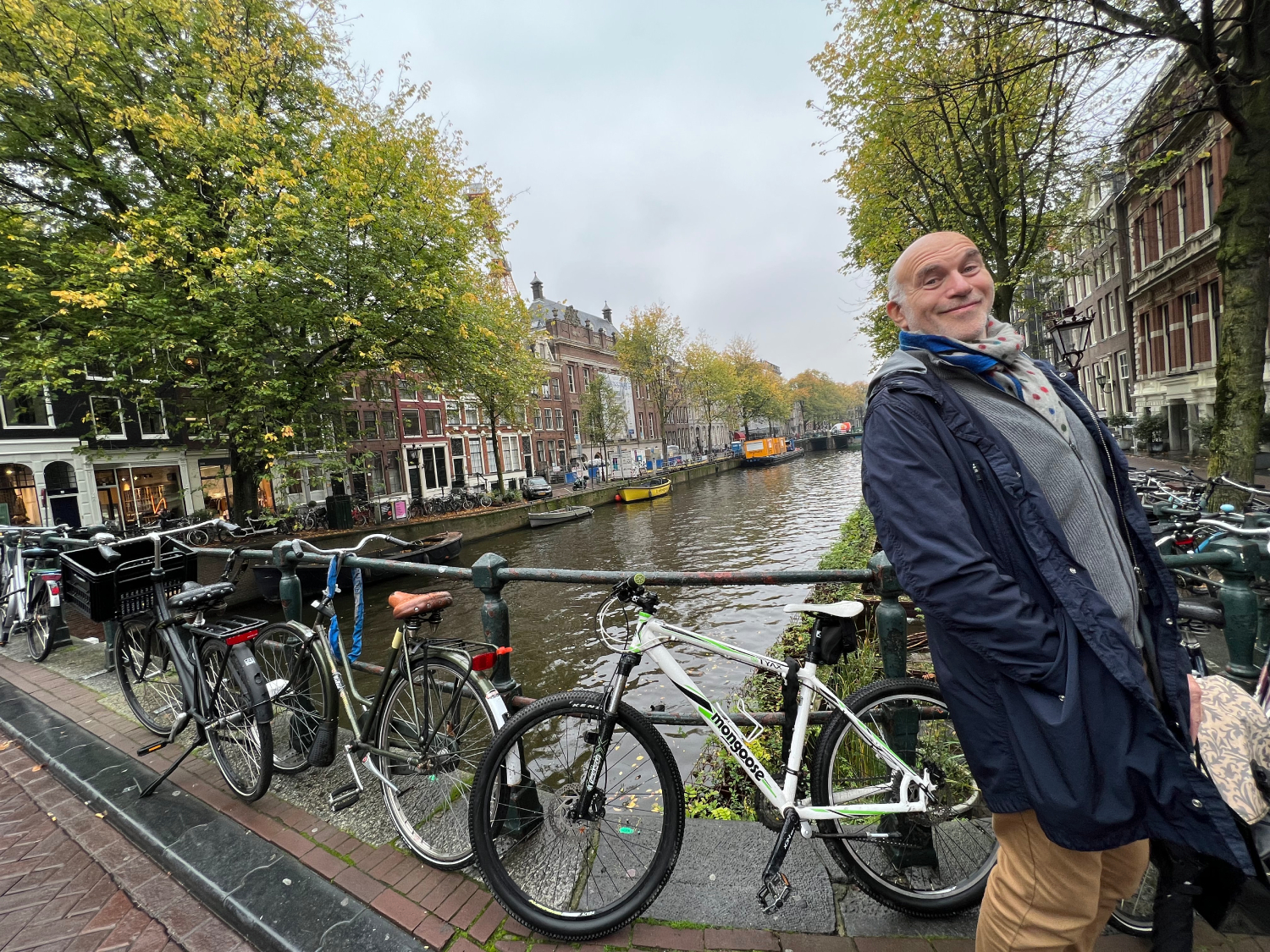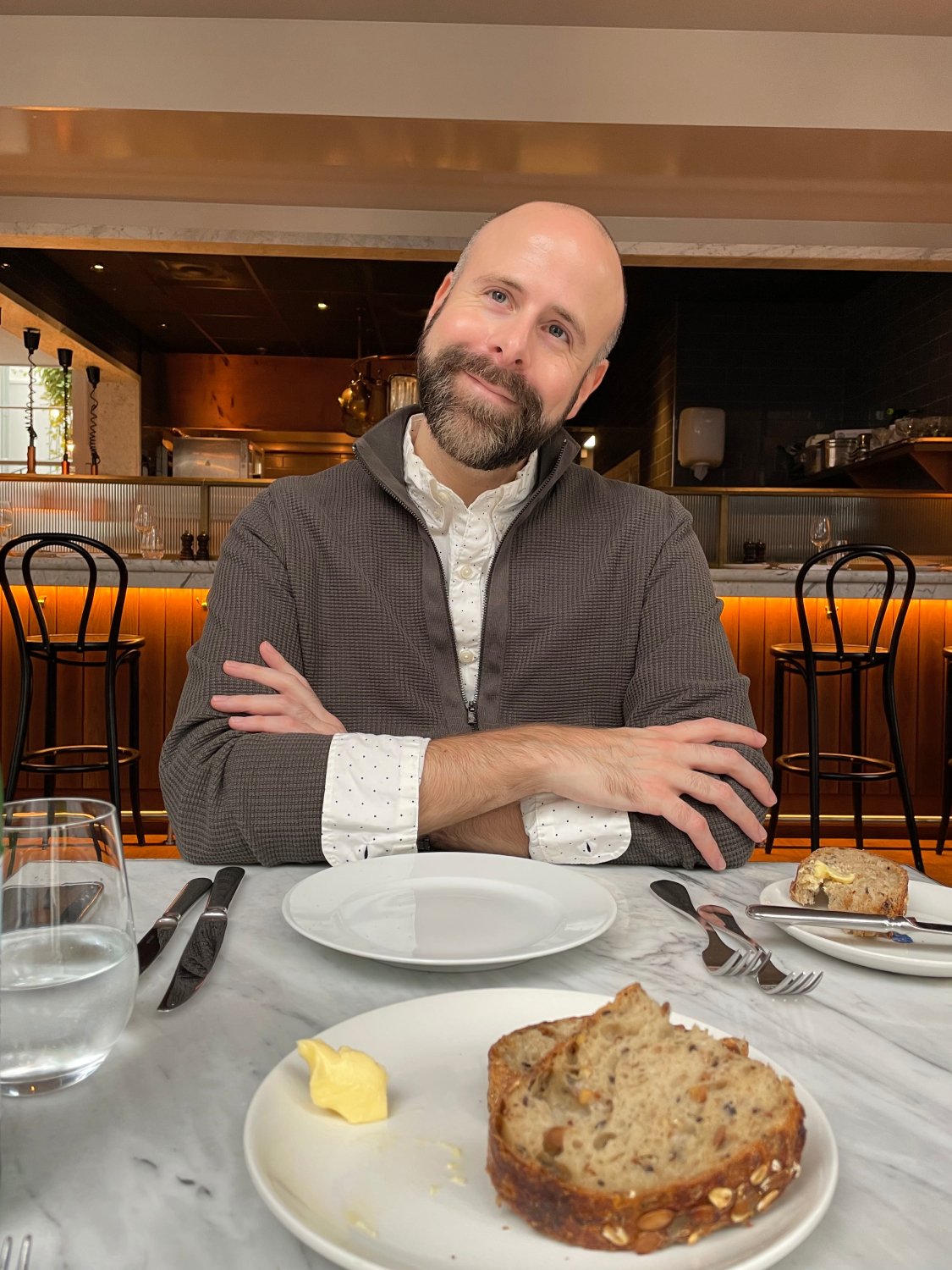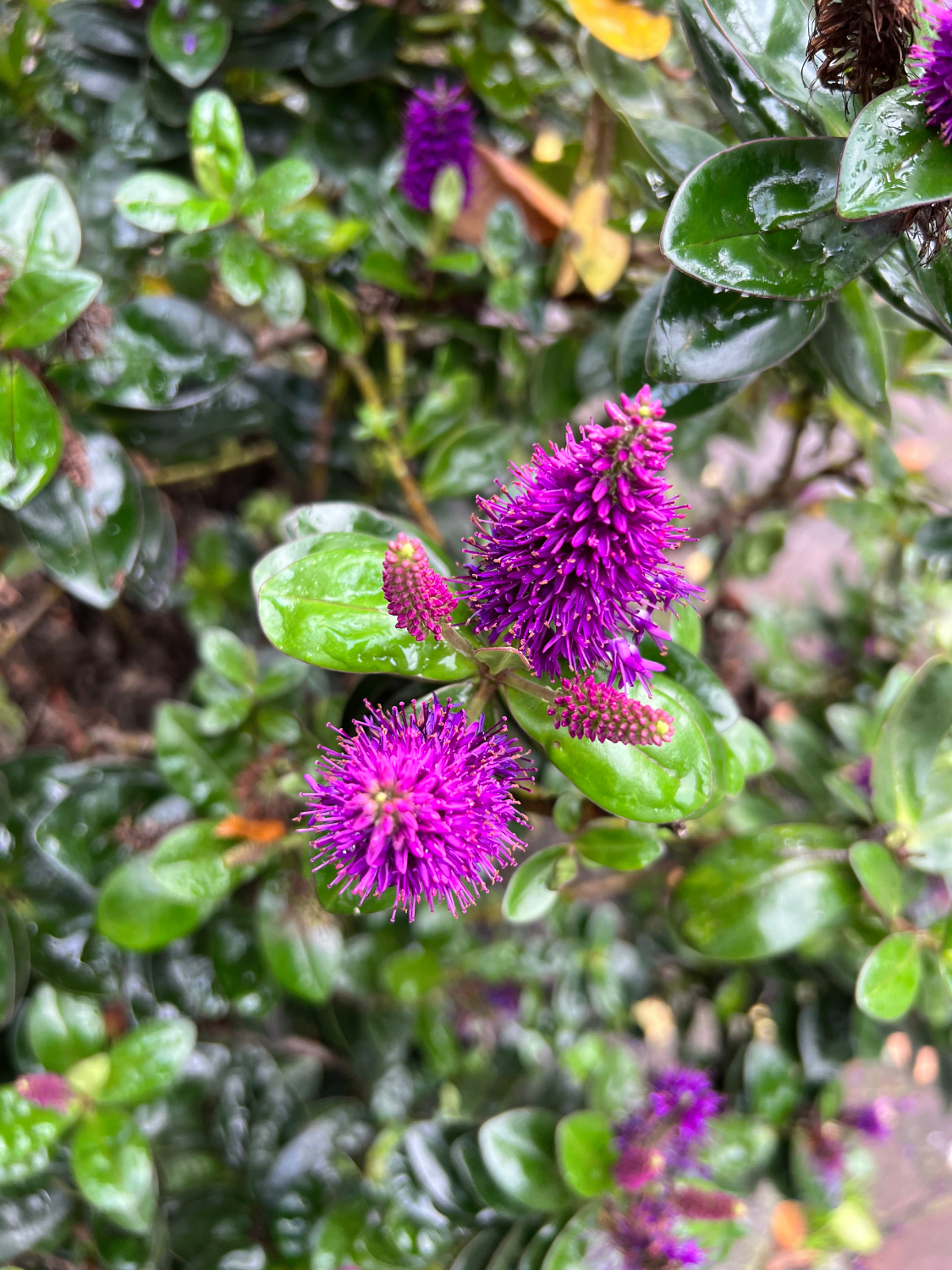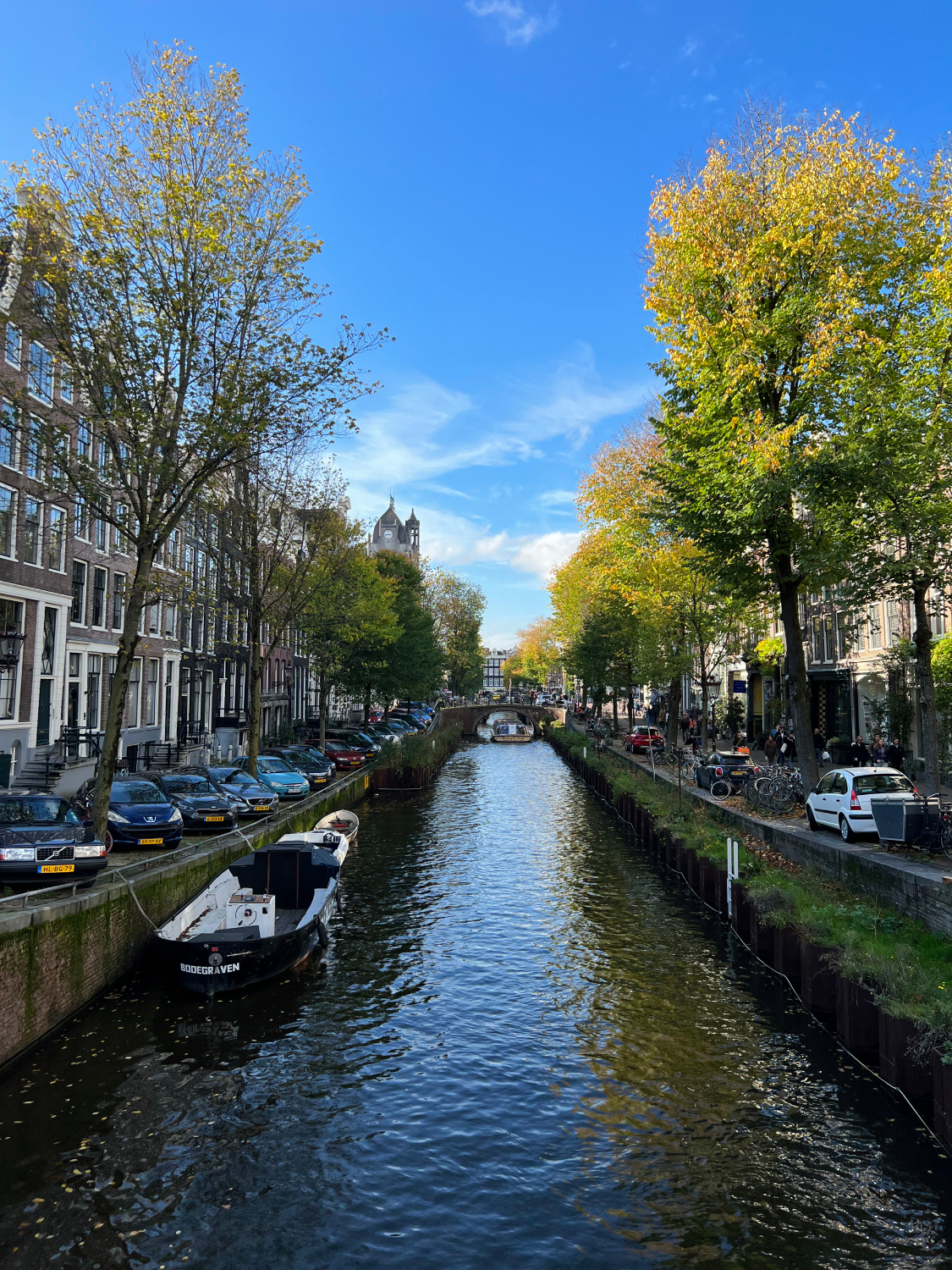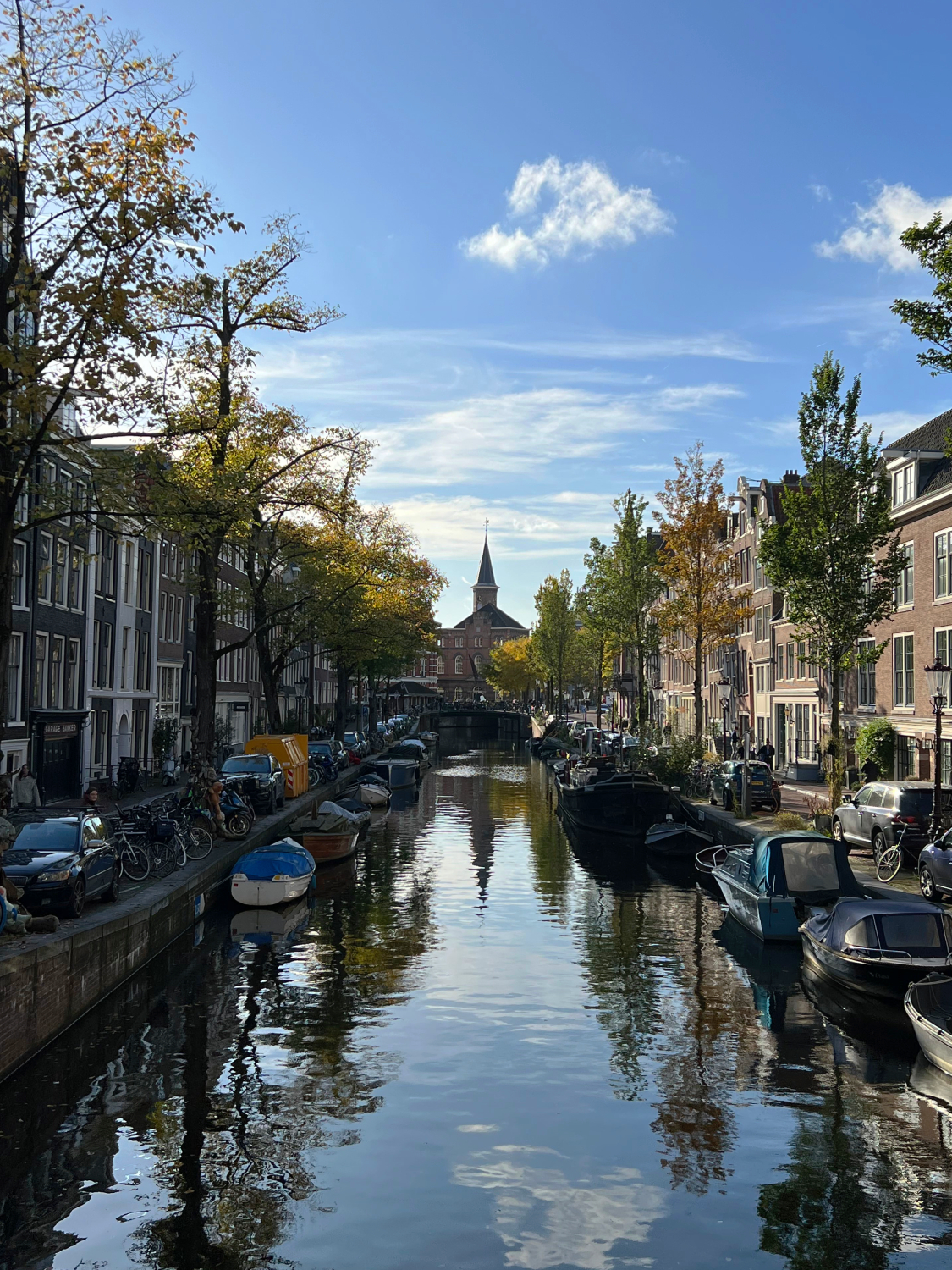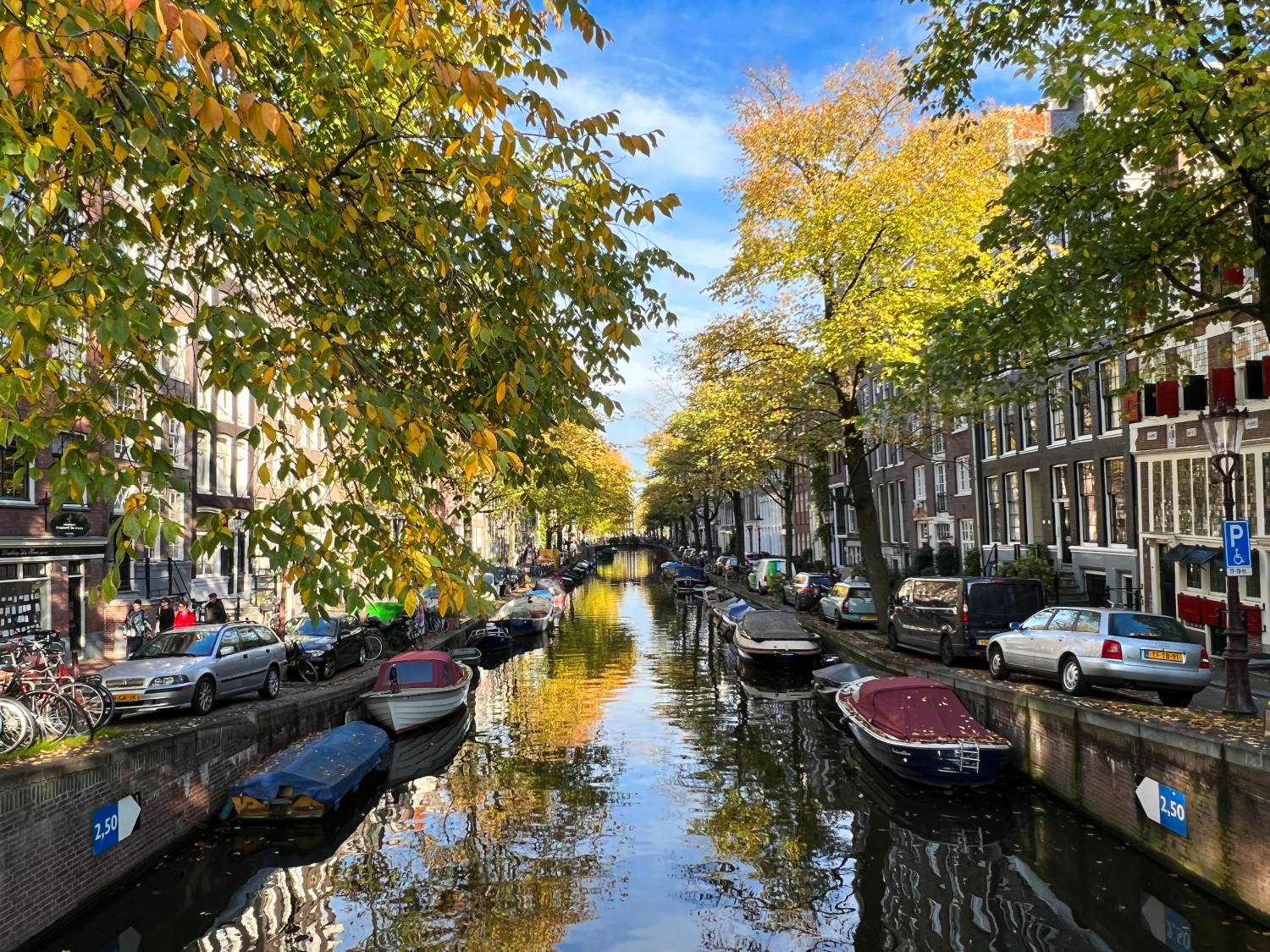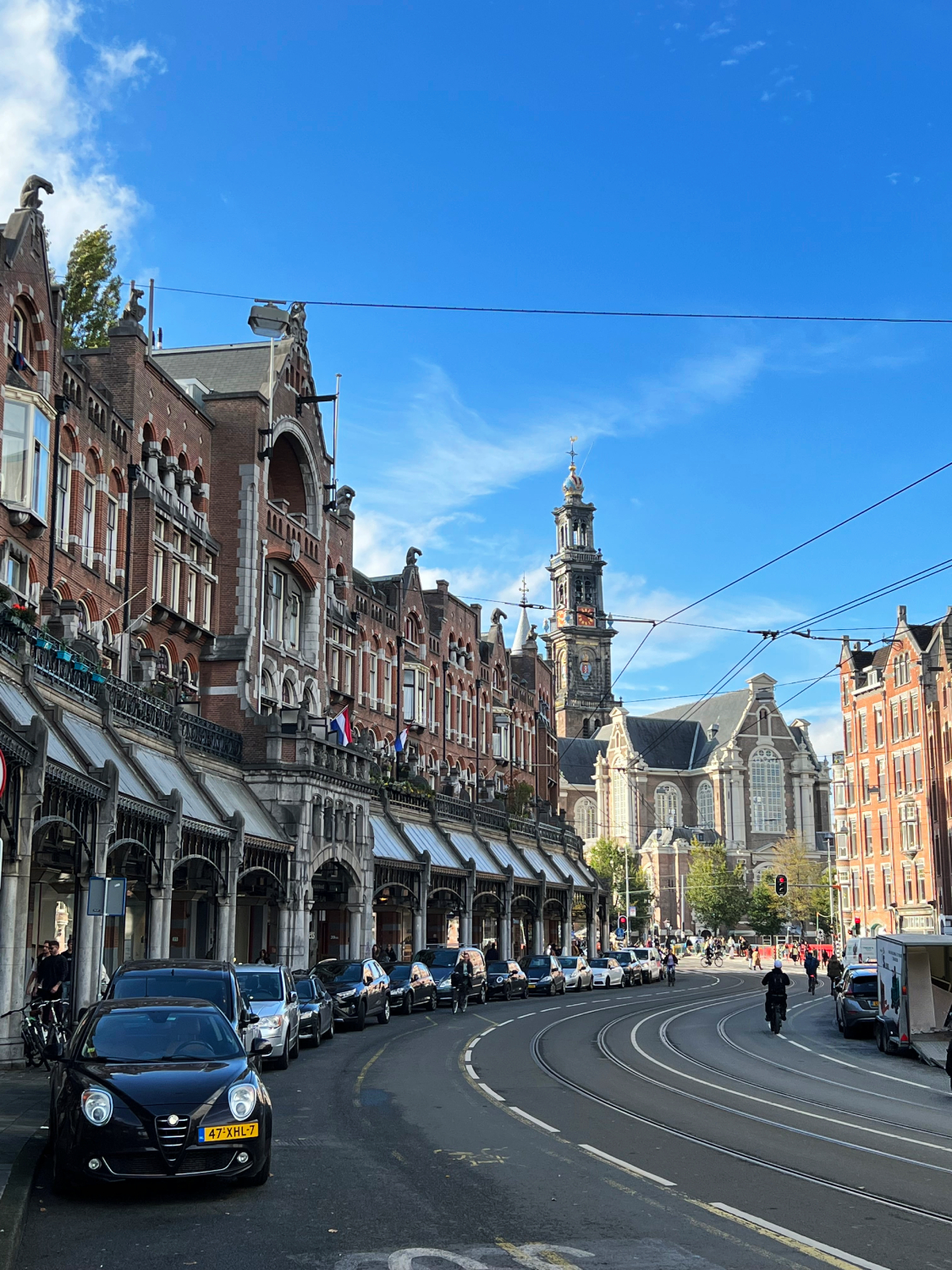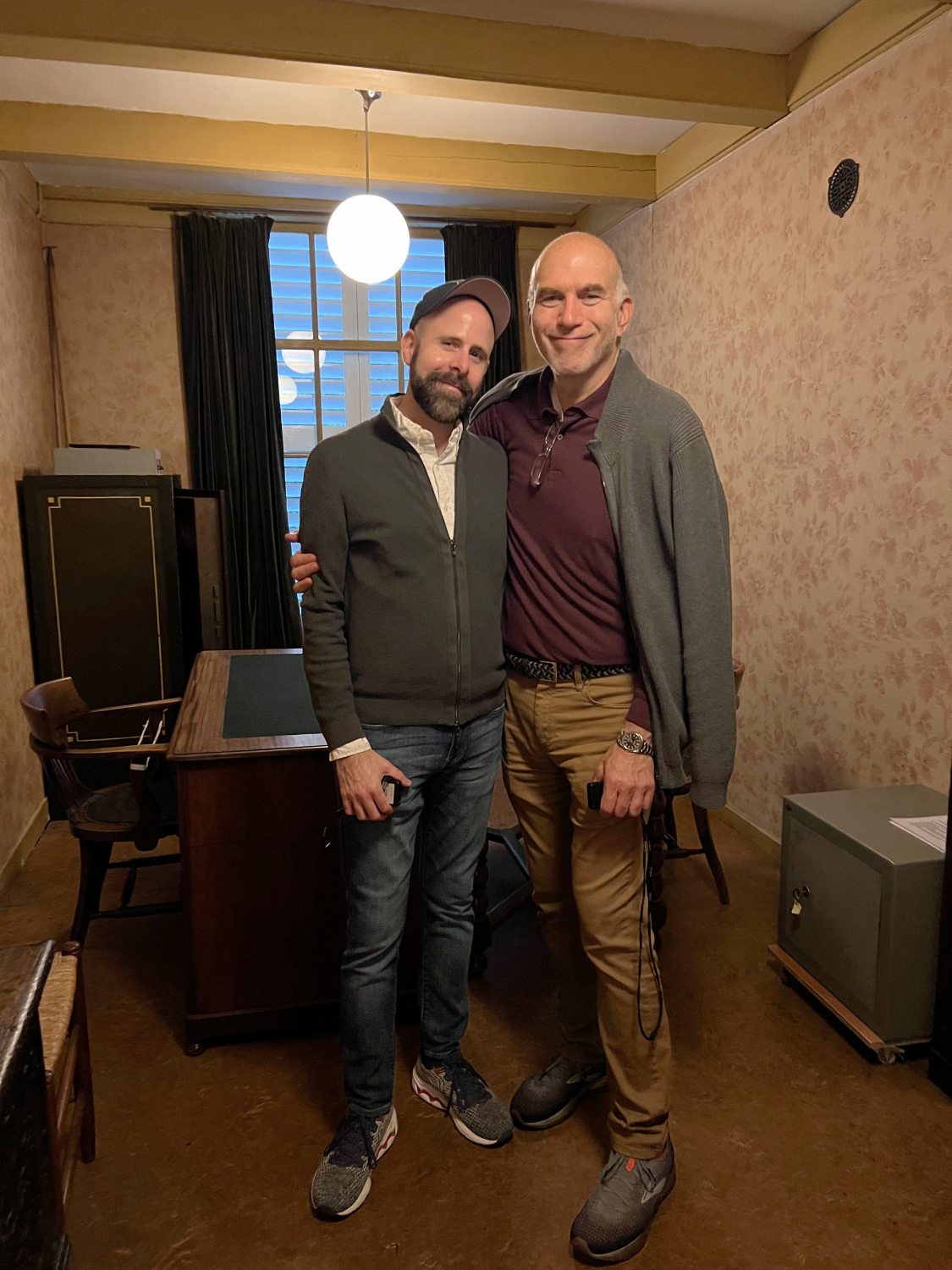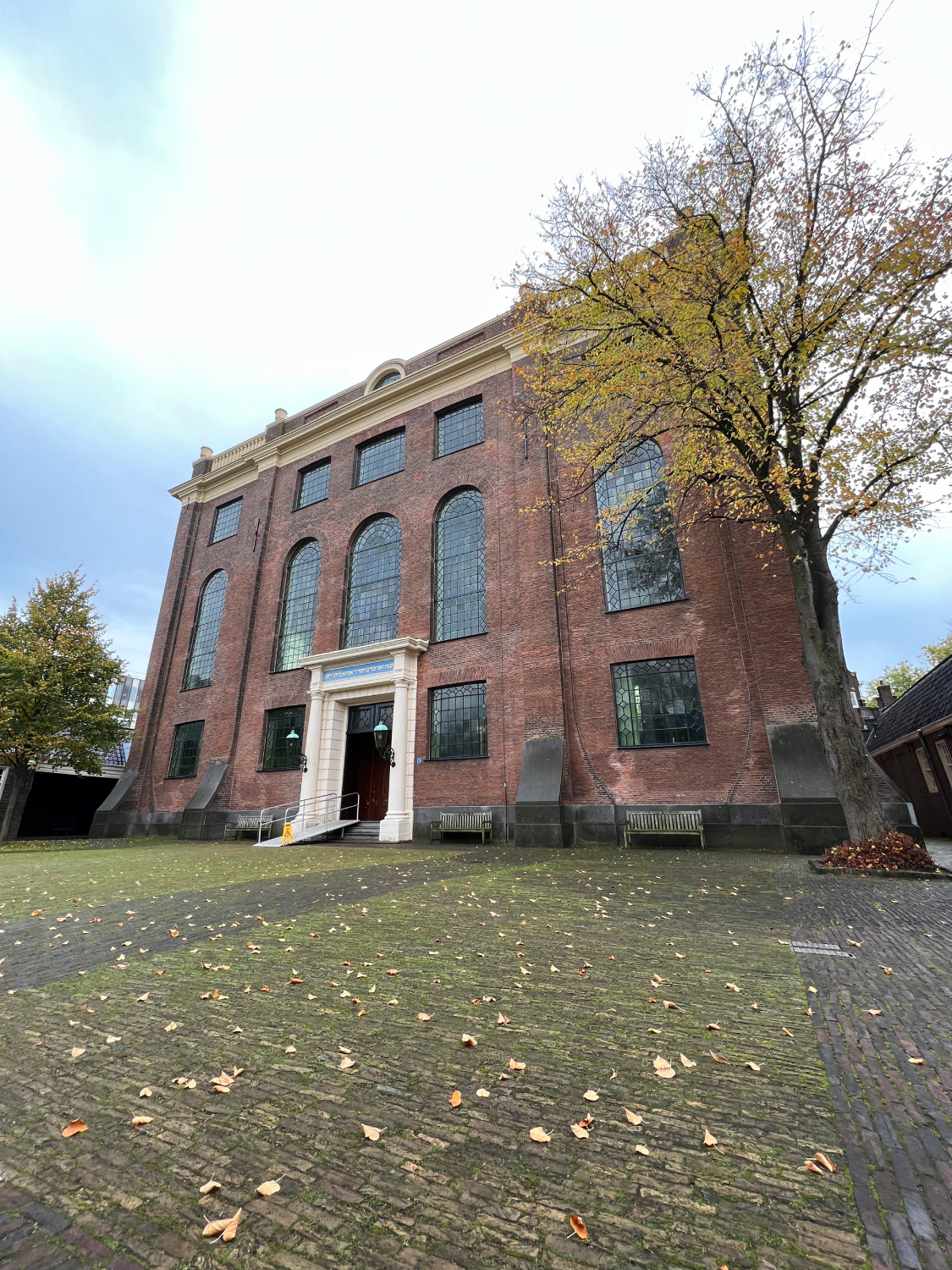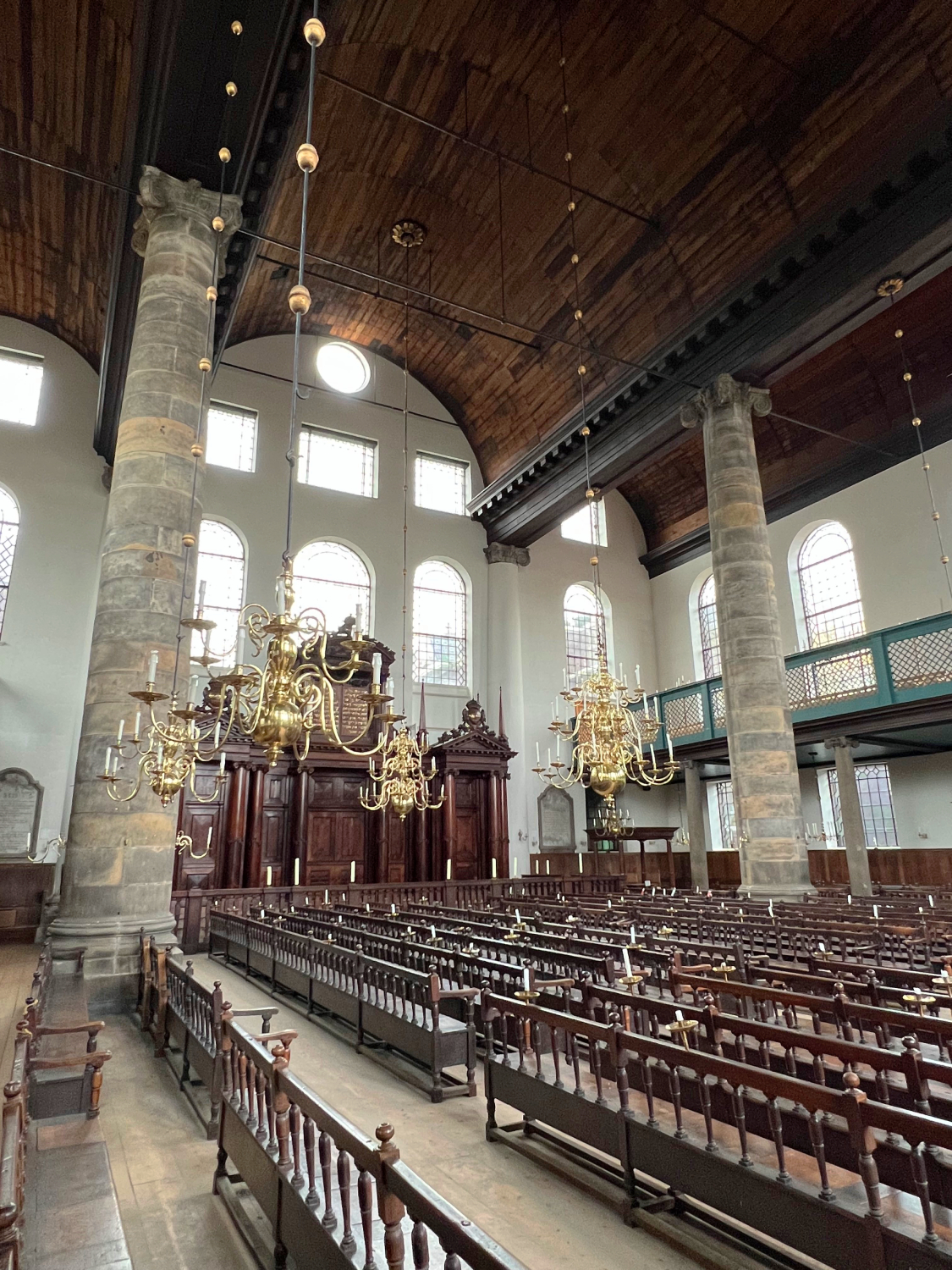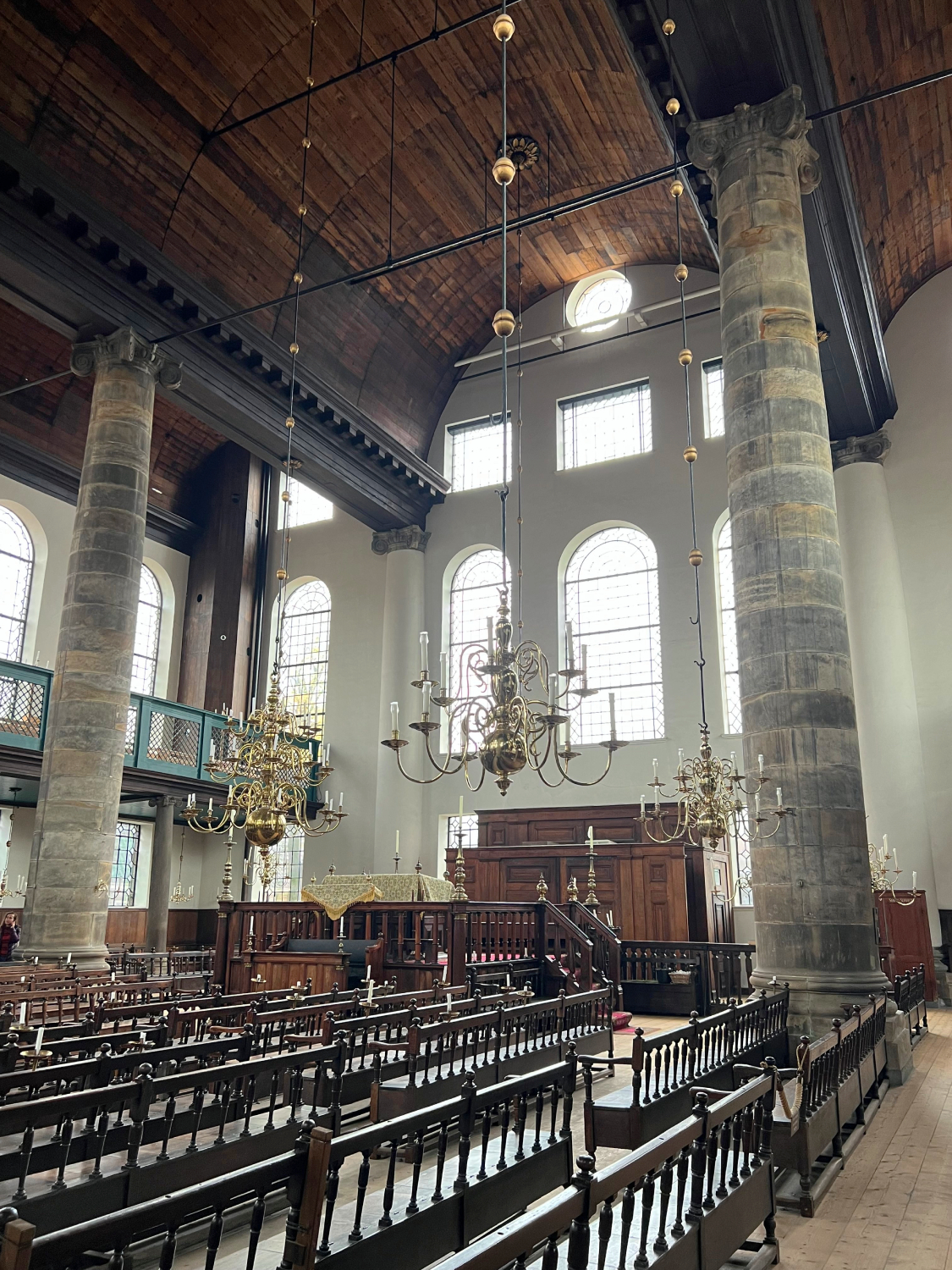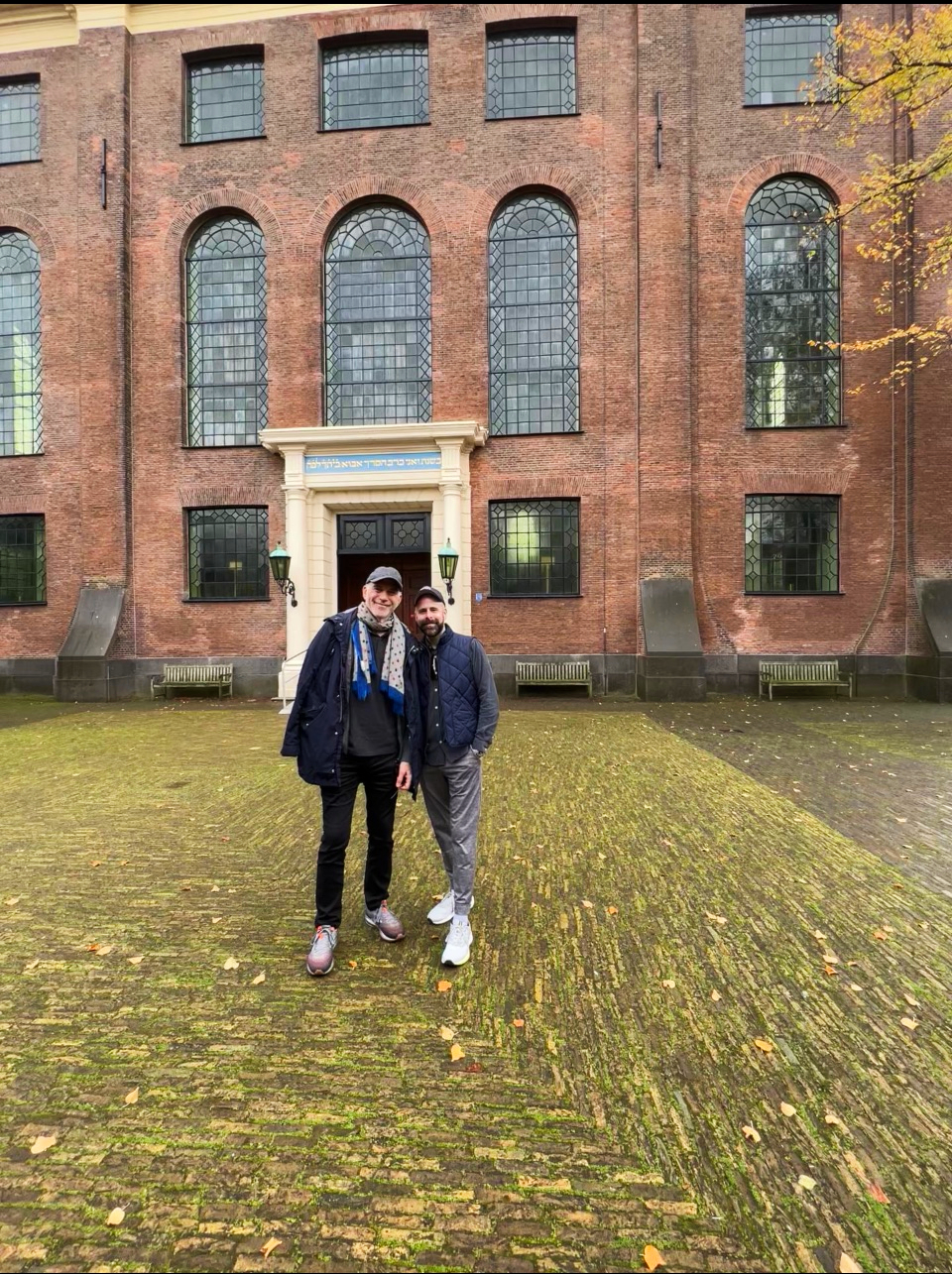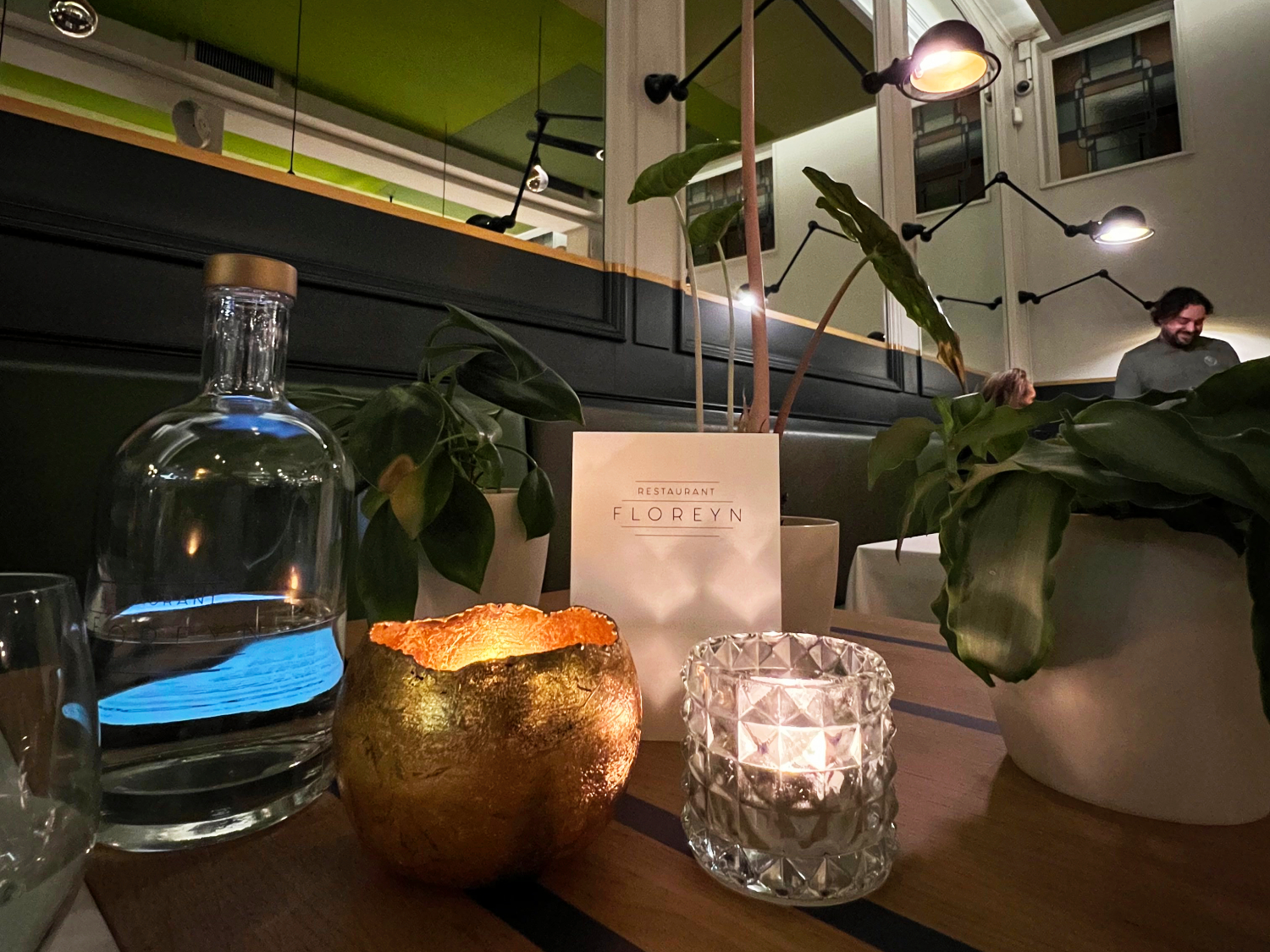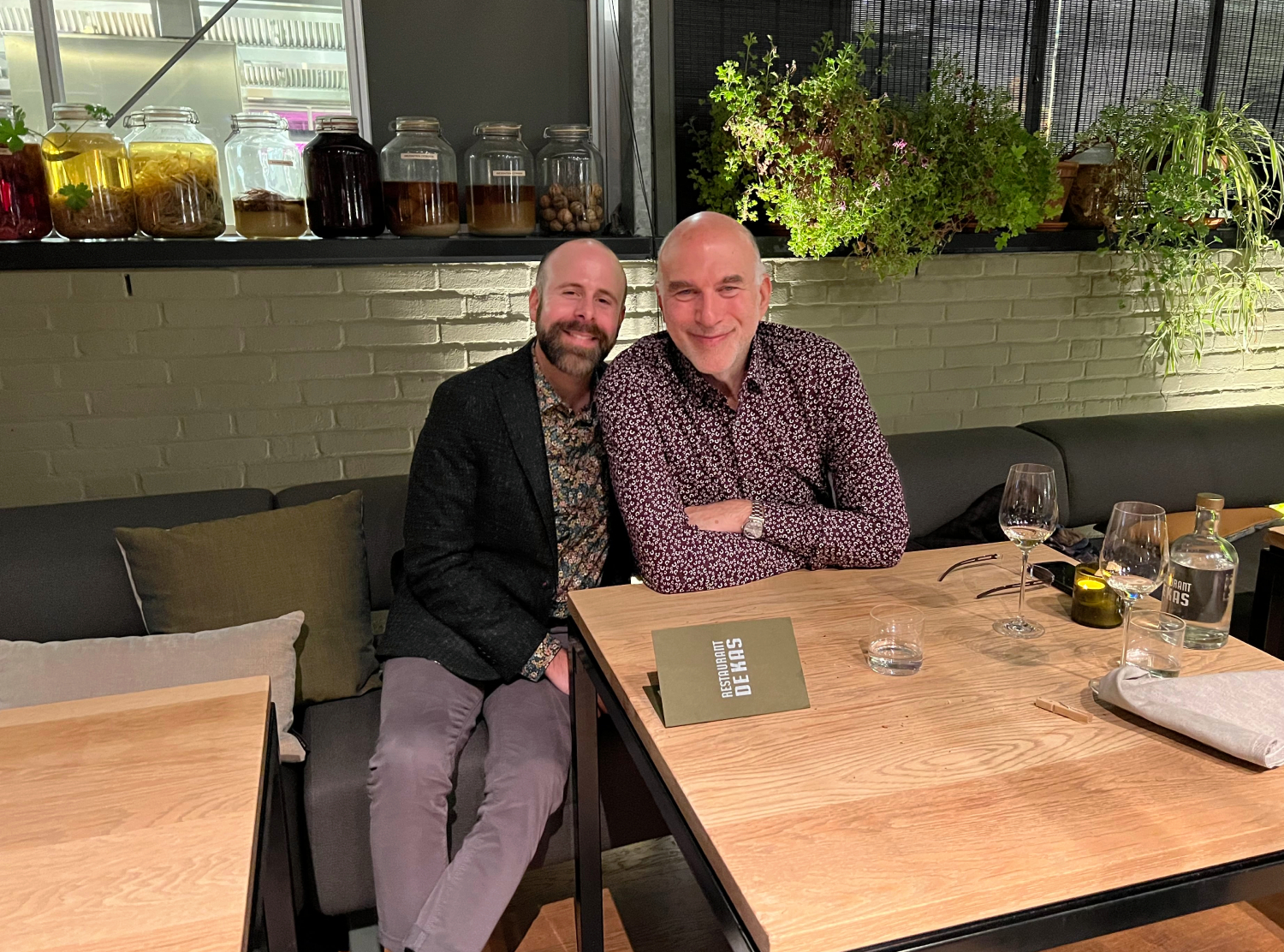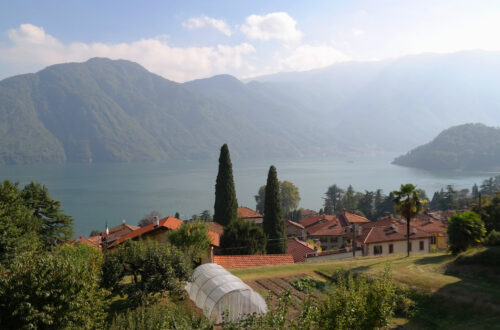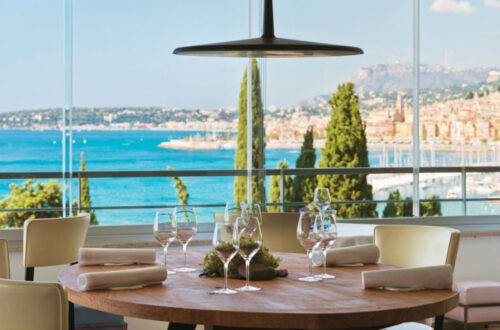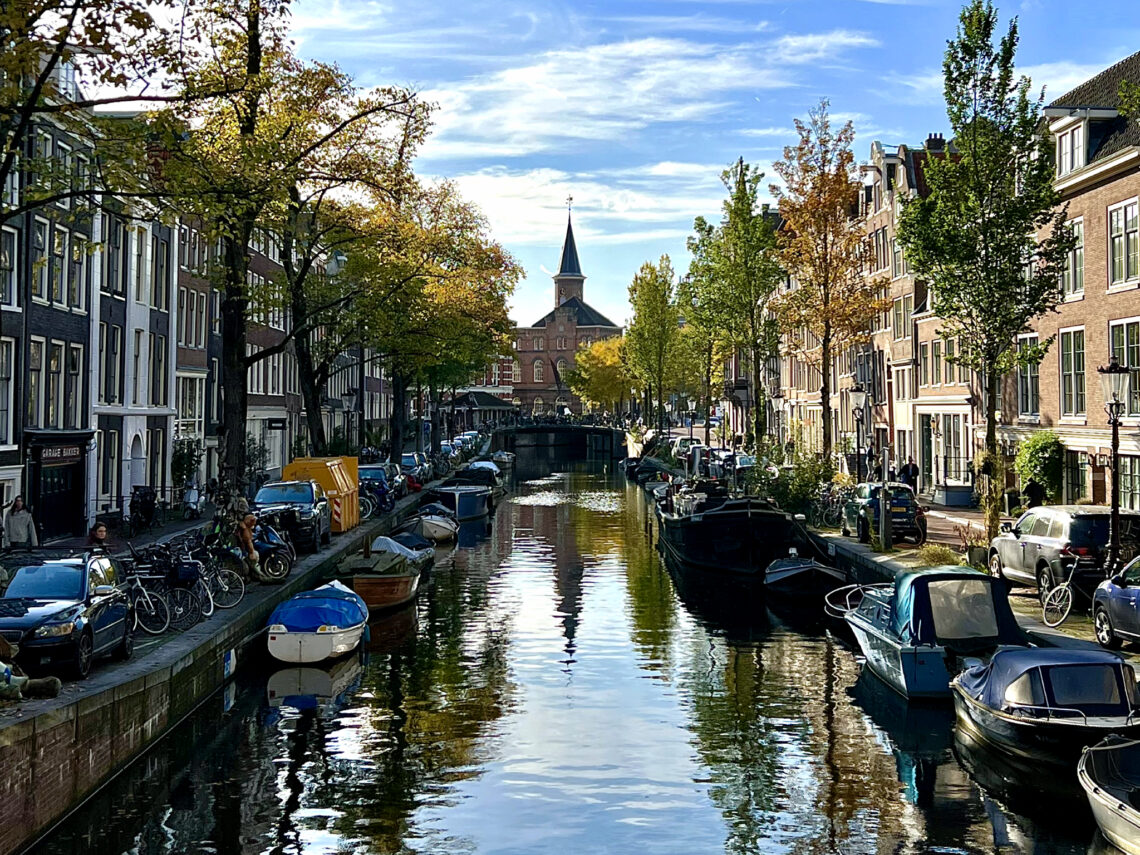
Amsterdam, Netherlands
Amsterdam had been on my travel shortlist for quite some time. In October of 2022, Charles and I were in London and tagged on a long weekend to visit the “Venice of the North,” as Amserdam is affectionately called due to its numerous scenic canals. I was hoping for a love affair, but the charm and allure receded after the first day – due in part to ADE, an annual electronic music festival that commandeered the city and had the streets inundated with the strung out youth of Europe. I also didn’t take well to the cyclists, who seemed aggressive and uninterested in sharing the city with pedestrians. There were far too many moments where I felt unsafe crossing a street – and I live in New York. However, we did manage to discover a few of the city’s saving graces during our four-night stay. Here’s a taste of the high points from our trip:
The first and simplest pleasure was taking the Eurostar from London St. Pancras to Amsterdam Centraal, an easy four-hour ride through the bucolic countryside of county Kent and Hauts-de-France, with glimpses of the Brussels, Antwerp, and Rotterdam skylines. We rode in an extremely comfortable business class car and were served a multi-course, cloth napkin lunch. I love European train travel – inexpensive, reliable, and civilized.
From central station we took a taxi to our hotel, the Sofitel Legend The Grand Amsterdam, a stunning property steeped in history. A part of the building dates back to 1411, when it was used as a convent. Over the next 600 years, it became an upscale lodging house, known as Princenhof, and then transformed into City Hall. It wasn’t until 1992 when it was converted into the hotel that it is today. While technically located on the outskirts of Amsterdam’s infamous Red Light District, the city has in recent years taken measures to curtail the bawdy activities of the neighborhood. Aside from the scent of marijuana wafting from the street, the area around the hotel was very quiet.
The lobby of The Grand is an elegant affair, with several themed sitting areas and windows overlooking a beautiful inner garden. The main stairwell in our wing was bedecked with luminescent inlaid stained glass panels that spanned the height of each landing. We stayed in a Luxury Room with soaring ceilings and scenic views over a canal. The decor was refined, yet modern, with a supremely comfortable king bed and a contemporary black marble bathroom with two entrances plus a standing shower and separate tub. Each morning, a fresh and elaborate breakfast was served in the hotel’s Oriole restaurant, and upon returning in the afternoon, the lobby was stocked with citrus infused water and free champagne. For me, a really great hotel has the ability to make or break a trip, and in this case, The Grand embodied one of Amsterdam’s redeeming qualities – impeccable hospitality.
On our first morning exploring the city, Charles and I headed over to the Rijksmuseum, an imposing gothic- and renaissance-style structure that houses more than 8,000 works of art from Dutch and European history, including more than 2,000 masterpieces from the Dutch Golden Age. The collection is vast, but fortunately, all the greatest hits are located in the preeminent Gallery of Honour, a lofty corridor with a main focal point of Rembrandt’s The Night Watch, along with numerous side alcoves featuring a mix of treasures from the 17th century.
Like the Mona Lisa at the Louvre or the David at the Galleria Accademia, The Night Watch draws the biggest crowd because it’s the one piece that everyone knows – and for good reason. It is Rembrandt’s largest painting, made famous by his use of light to create focal points and emphasize particular details. The Night Watch is impressive, but there were other Rembrandt pieces in the gallery that I found mesmerizing, like Portrait of Marten Soolmans, with Mr. Soolmans’ meticulously painted snowflake-like lace collar, side tassels, and shoe embellishments practically jumping off the canvas.
Other masterpieces in the gallery depict Dutch life from centuries ago, like Frans Hals’ the Merry Drinker, with his unique style of bravura painting that creates liveliness and animation; and Johannes Vermeer’s The Milkmaid, with his treatment of light by means of hundreds of colorful dots on the surface of objects. The Gallery of Honour also features several female artists from the Dutch Golden Age – a rarity in historic art museums. Judith Leyster’s The Jolly Drinker was most likely inspired by Frans Hals, who is believed to be her teacher. Rachel Ruysch was the most famous female artist of her time. Her Still Life of Flowers in a Glass Vase attracted the attention of wealthy patrons – and it’s easy to see why.
From the Rijksmuseum, we roamed the streets of Grachtengordel, a ring of canals crisscrossed by bridges and lined with elegant 17th century canal houses. This part of the city was constructed on wooden pylons, many of which are hundreds of years old, so it’s a common sight to see a canal house leaning into its neighbor – indicating that the pylons supporting it are sinking. Tilted houses can be seen on every block, creating a sense of whimsy. Grachtengordel leads into De 9 Straatjes, a picturesque neighborhood of 9 streets traversing four canals. Each of the streets is brimming with boutiques, antique shops, galleries, cafes, and lovely little eateries.
Funny story: Charles and I tried to get a table for lunch at Jansz, the restaurant associated with the uber chic Pulitzer Hotel in the heart of De 9 Straatjes. The hotel lobby was packed with ADE attendees, but the restaurant was virtually empty. When we requested a table for two, the hostess gave us some lame excuse and turned us away. We mosied into the shop across the street, de9heren, which had some interesting menswear pieces on display in the window. We struck up a conversation with the proprietor and told him what had just transpired at Jansz. The next thing we knew he was on the phone with the hostess, and after a few minutes of fervid Dutch dialogue, he said they’d be waiting to seat us. Another example of fine hospitality…and from a stranger no less. We thanked him profusely, and went back across the street for a delightful lunch.
Perhaps the most renowned landmark that people tend to associate with Amsterdam is the Anne Frank House. I’d heard stories from friends who waited in line for hours to purchase tickets to visit the museum and tour the Secret Annex, where Anne and her family hid from the Nazis – and where she wrote her legendary diary. Fortunately, we had a connection with the museum’s communications director, Annemarie, who assisted with tickets and led us on an exclusive tour of Otto Frank’s private office, which isn’t open to the public.
Like most Jewish kids growing up in America, I learned about Anne Frank at a very young age – in both Hebrew and secular schools. I’m embarrassed to admit that I’ve never read her diary. I knew bits and pieces of her story, but I didn’t fully understand the importance of her diary until last October when I toured the museum. Any Holocaust-related museum, monument, or memorial is difficult on the psyche of a Jewish person, and the Anne Frank House was no exception. Ducking into the Secret Annex, obscured by a revolving bookcase – where eight human souls hid for their lives for a reason as trivial as one’s ethnicity – was, needless to say, very unsettling.
Walking through Anne’s bedroom and seeing the magazine clippings and cheerful pin-ups she used to decorate her walls, these were reminders that she was just a young girl trying to create some semblance of joy during a very dark time. Despite the daily terror of being caught and deported to a concentration camp – which, as we know, did happen on August 4, 1944 – Anne managed to remain optimistic and courageous, two sentiments reflected in the words of her diary. Anne died seven months later in the Bergen-Belsen camp – but her spirit lives on in the published text of her diary, which, to this day, is one of the most translated books the world over.
The next morning, Charles and I met Baruch, a guide arranged through the Joods Cultureel Kwartier, for a private tour of Amsterdam’s Portuguese Synagogue. Located in Jodenbuurt, the historic Jewish quarter, the synagogue was completed in 1675 as a place of prayer for the city’s Portuguese Jews who had fled the Iberian Inquisition. At the time, Amsterdam was home to one of the largest Sephardic Jewish communities, in thanks to Dutch laws that, even almost four centuries ago, promoted tolerance, anti-discrimination, and freedom of religion. During the pogroms of the 1800s, many Ashkenazi Jews fled Eastern Europe and also sought refuge and religious freedom in the Netherlands – until the rise of Hitler.
When the Nazis invaded the Netherlands on May 10, 1940, Baruch’s mother was taken in and hid by a Christian family. Her parents and two brothers were captured and sent to Westerbork before being deported to Buchenwald and Auschwitz. One of her brother’s escaped and joined the Allied forces. The other managed to survive, but both parents perished in the camps. It was difficult hearing Baruch’s stories. His mother’s parents were just two of the three quarters of Dutch Jews who were murdered by the Nazis. How could a country with a history of protecting Jews allow this to happen? It made me angry and stuck in my head for the rest of our time in Amsterdam. The plight of the Jewish people is never ending.
Despite this sadness, touring the synagogue managed to perk me up. Modeled after the Temple of Solomon in Jerusalem, the interior is sweeping in scale with natural light pouring in from all sides. Eight rotund ionic columns hold up a tri-fold arched ceiling, with the Torah ark, made of Brazilian jacaranda, perfectly aligned in the center. Several golden candelabras are suspended from the ceiling, and as the main sanctuary is not electrified, each candle must be lit by hand. As is customary with wooden floors in the Netherlands, the pine plank boards are strewn with fine sand to absorb dust, moisture, and dirt. At the time of its completion in the 17th century, it was the largest synagogue in the world. Others have surpassed it in size since then, but the sanctuary’s austerity and grand scale make for one truly awe-inspiring piece of religious architecture.
Our time in Amsterdam opened and closed with two outstanding meals. On our first night we dined at Floreyn, a newer restaurant on Albert Cuypstraat in De Pijp, the city’s version of the Latin Quarter. Chef and owner Jasper Holthuis wanted to create a fine dining experience that was truly Dutch in nature, featuring locally sourced produce and a globally inspired menu – representing the true melting pot that is Amsterdam. The space is intimate with only 12 tables and a botanist-themed bar with staggered hydroponic-style vases. A sexy, dark green banquet spans the entire length of one wall, and black iron industrial-chic wall sconces create an ambiance of warmth. While the menu can be ordered a la carte, we opted for the eight-course tasting. Standouts included the celeriac, which was served sous vide with a buttermilk foam dotted with a bright oil made from lovage and topped with pumpkin seeds. We also loved the sweet and savory dessert-like duck liver, which was topped with juicy pear, roasted coffee grinds, and a succulent tonka bean glaze. Our waiter was extremely friendly (again, that Dutch hospitality), and also recommended a spectacular Dutch Riesling from Domein Steenberg, the dry variety that was the perfect pairing with our meal.
On our last evening, Charles and I dined at Michelin-starred De Kas, tucked away in Amsterdam’s Park Frankendael. The kitchen and dining area are located in a converted greenhouse from 1927, with adjacent newer, active greenhouses and open-aired gardens that supply the restaurant with over 300 varieties of vegetables, herbs, and fruits – all harvested the day of preparation. This gastronomic plant-to-plate approach has also earned De Kas a Michelin Green Star. We opted for the six-course tasting, which featured 22 ingredients grown onsite. I loved how the presentation of each dish wasn’t fussy, but instead highlighted the freshness of the produce. The meal kicked off with a large tapioca cracker and a green aioli for dipping, followed by scallop crudo served in its shell with parsnip and horseradish puree, fennel pollen, and dill. Then, a slow roasted succulent Jerusalem artichoke was beautifully prepared with radicchio, small slabs of bright pink hamachi, Japanese turnip roots and greens, and chopped olives. The next course highlighted the trompette de la mort mushroom, followed by tender Indian-spiced chicken thighs, house-made sourdough, and a pear and hazelnut dessert with shiso and szechuan peppercorn.
Okay, so maybe Amsterdam wasn’t so bad. Ironically, the love affair I was hoping for has been attained in reliving the memories of the trip.
Last visited in October, 2022




